CIRCUMCISION QUANDARY
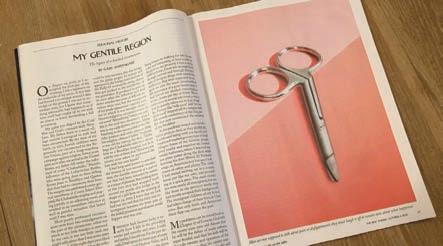
Group advocates for uncircumcised
Neal Kurn, Lindsey Seitchik to be honored at annual gala

Neal Kurn has witnessed firsthand the enormous growth of the Jewish community in Maricopa County during his 73 years in the state. And he’s proud to be a part of it.
“We are basically a first-generation community,” Kurn said.
When he moved here as a 14-year-old boy with his family in 1948, he estimates the Jewish community was 1,500 people — max. Now, it’s closer to 100,000 people, according to Arizona State University’s 2019 Jewish Community Survey.


Part of any community’s growth and longevity is the financial health of its institutions, and that’s where Kurn, 87, feels he’s left his biggest imprint. In 1971, as a board member and officer of the Jewish Federation of Greater Phoenix, he prepared the first set of bylaws to form the Jewish Community Foundation of Greater Phoenix, which assists donors to plan and establish funds for legacy giving.
The Martin Pear Jewish Community Center is honoring Kurn for his legacy at its annual gala on Dec. 4, along with Lindsey Seitchik, an MPJCC board member.
Jay Jacobs, CEO of the MPJCC, said Kurn and Seitchik are both “great role models for compassion and service as they strive to make our world a better place.”
Kurn spent 55 years as a lawyer specializing in business, estate and charitable planning. He said he always tried to stress the importance of creating endowments and foundations to support institutions, not only in the good times, but also in the bad.
“A lot of philanthropy dried up in this community completely in the ‘08-’09 period of time,” he said.

He’s glad to see the MPJCC, and the entire Ina Levine Jewish Community Campus, now “flourishing,” he said, with a big variety of activities, diversity of members and general “vitality.”
Janet Arnold Rees, 73, built community through creativity and connection
SHANNON LEVITT | MANAGING EDITOR
Janet Arnold Rees never really entertained the idea of retirement. She didn’t need to because she loved what she did. She embodied the adage that if you love what you do, you will never work a day in your life. And through all her various jobs — teacher, preschool director, entrepreneur, theatre producer and social worker — she put the Jewish community first.
“Community was the theme of her life,” Tom Rees, her husband, told Jewish News.
“She didn’t look at her work as if she was clocking in in the morning and clocking out at night,” he said. “If someone needed something on the weekend, it was fine. It’s who she was, not just what she did. She followed her passion and she loved helping people.”
He suspected she would have likely worked well into her 80s because of the joy she derived from it. “It was never about salary or money,” he said. “It was always about how she could help — an amazing trait.”
But his supposition will sadly not have the chance to be realized. Janet, senior concierge and creative aging coordinator for Jewish Family & Children’s Service, founder of Arizona Jewish Theatre Company and devoted friend to Greater Phoenix’s Jewish community, died on Tuesday, Nov. 23.

She was diagnosed with idiopathic pulmonary fibrosis in September. It is a serious lung disease that offers a poor prognosis, and despite her natural vigor and general good health, she declined suddenly, checked herself into the hospital four weeks ago and never left. She was 73.
People were shocked and saddened to learn of her death. Several turned to social media to express their heartbreak, calling Janet a “stalwart” and “an integral part of the community.” Adjectives like “fabulous, kind, caring, admirable, special and a force,” were used liberally.
Several people said they had seen Janet as recently as
Chanukah games and more
Chanukah games and parshah plays were part of Temple Beth Sholom of the East Valley’s festival this year. For more community photos, go to p. 22.

SPECIAL PULLOUT | B1
DECEMBER
HEADLINES | 8
SENIOR LIFESTYLE Seniors talk isolation and making changes
3, 2021 | KISLEV 29, 5782 | VOLUME 74, NUMBER 7 $1.50
receiving it as a gift
Israeli policies get in the way
A Chanukah miracle: Boris Johnson breaks a menorah seconds after
Israel’s deputy foreign minister aims to woo progressives, but
NATIONAL INTERNATIONAL KEEP YOUR EYE ON jewishaz.com
Austin Chabad lights menorah at the overpass where antisemitic banners were hung last month
NICOLE RAZ | STAFF WRITER
SEE GALA, PAGE 2
PHOTO BY SARAH BOCHENEK
ISRAEL SEE
PHOTO BY MARK GLUCKMAN
REES, PAGE 3
“It’s basically the center of the Jewish community, and to some extent, a Jewish community center is the gateway to the community for a lot of Jewish people,” he said. He appreciates that it is also a pluralistic campus, welcoming people of all faiths. “It’s good that the Jewish community can reach out and touch the lives of non-Jews.”
He’s always believed a physical campus is of great importance for a Jewish community. “It brings people together and strengthens their ties to each other and to the community.”
Kurn is the second recipient of the William S. Levine Family Community Excellence Award, named after local philanthropist Bill Levine, who donated the funds to open the Ina Levine Jewish Community Campus, which is named for his late first wife.
“Bill Levine has been a quiet pillar in the Valley and greater community for decades,” Jacobs said. “Neal Kurn, with more than 50 years of service to our community, exemplifies community excellence through the numerous boards he has served on throughout the Valley of the Sun.”
In addition to his positions with the Federation and JCF, Kurn also helped to guide the Phoenix chapter of the American Jewish Committee, and even the National Council of Jewish Federations, now known as the Jewish Federations of North America.
Kurn knows Levine “quite well” and being associated with him is an honor, he said. “It’s hard to turn down an award that has his name attached to it.”
Kurn is also a recipient of the Federation’s 1986 Medal of Honor, which awards a dedication to service for the Jewish community.
Valuing Judaism and the Jewish community is in his nature. “It’s just something I’ve grown up and lived with,” he said, adding he identifies with the Jewish value system and its emphasis on education, literacy, study and achievement. “I’m rather proud of that —
proud to be associated with it.”
Marty Haberer, president and CEO of the Federation, said Kurn is the “perfect choice” to receive the Levine award.
“Of the six federations I have worked for in my career, I have never met a lay leader with such a deep and thorough recall of the history of the Jewish community,” Haberer said. “As was the case when Neal received the Federation’s Medal of Honor award in 1986, no one in the community has the ‘command’ of the community’s oral Torah quite like Neal Kurn.”
Seitchik, meanwhile, is the fourth recipient of the Maya Schulder Rising Star Award. Schulder was only 15 when she died during a trip to Israel. “She was a young, bright-shining light lost too soon,” said Jacobs. “The award, named in her memory, is presented to a rising star who gives of their time and talent to help transform lives within our J community.”
Seitchik recently completed her first threeyear MPJCC board term. She fell in love with the MPJCC and the ILJCC in 2015, when she moved to Scottsdale with her husband and one-year-old daughter.
“We didn’t — and still don’t — have any family out here, and it can be really hard, especially when you’re moving with a baby,” she said. “I just feel so lucky that we found The J.” Seitchik enjoys the offered social and
educational activities, her husband enjoys the gym and amenities and her daughter enjoys the community. “I love that there are intergenerational activities there,” she said.
She and her husband, both political consultants, were eager to find a community to call home.
“I really need to total up how many times I moved from the time I left college, to when we finally found Arizona,” she joked. She’s lived in Miami, Ohio, Las Vegas, Sacramento, Washington, D.C. and New York.
Seitchik and her husband made a commitment to each other that once they found a place to settle down, they would get involved and give back to their community.
“A lot of people want to volunteer or want to help, but they don’t know where to go,” she said. “I credit the staff at the JCC for being able to identify that, both because I put myself in a position to help, but also because they have opportunities for me to help.”
She chaired the MPJCC’s first fundraising “SMILE” campaign and was the chair of the 2017 community-wide Purim carnival.
Seitchik said she is grateful for the people who stepped up before her to create the community and center that exists today.
“If we’ve learned anything over the last two years, your world can be very small. Mine involves The J.”
Jacobs said the gala is the MPJCC’s “most important fundraising event of the year.” Last year, the organization was not able to hold an in-person gala due to the COVID-19 pandemic, but still ran a direct mail campaign that raised over $450,000.

“We are thrilled, after two years, to be together again,” Jacobs said. “We look forward to celebrating and honoring two amazing pillars in our community. After the last 18 months, an event like this shows us we should never take for granted the strength and resiliency of our community.” JN
The Dec. 4 event will include cocktails, dinner, and entertainment. To learn more, visit mpjcc.org/gala21.
2021 Phoenix Jewish News Print Dates
January 8
January 22
February 5
February 19
March 5
March 12
March 19
March 26
April 2
April 16
May 7
May 21
June 4
July 9
August 6*
August 20
August 27
September 3
September 10
September 24
October 1
October 15**
November 5
November 19
December 3
December 17 *Best
a.m.-12:30 p.m. Friday
DEADLINES
EDITORIAL: Noon, Tuesday 9 days prior to publication
PUBLISHER Jewish Community Foundation of Greater Phoenix

GENERAL MANAGER Rich Solomon | 602.639.5861 rsolomon@jewishaz.com
MANAGING EDITOR Shannon Levitt | 602.639.5855 slevitt@jewishaz.com
STAFF WRITER Nicole Raz | 602.872.9470 nraz@jewishaz.com
ADVERTISING SALES CONSULTANT Jodi Lipson | 602.639.5866 jlipson@jewishaz.com


SUBSCRIPTIONS 602.870.9470 x 1 subscriptions@jewishaz.com
GRAPHIC DESIGNER Frank Wagner | 410.902.2300 ads_phoenixjn@midatlanticmedia.com
ADVERTISING: 11 a.m., Friday 3 days prior to publication
Jaime Roberts, Publisher | 2013-2016
Florence Newmark Eckstein, Publisher | 1981-2013
Cecil Newmark, Publisher | 1961-1981
Pearl Newmark, Editor | 1961-1981
M.B. Goldman, Jr., Founder | 1948-1961
PROUD MEMBER OF

2 DECEMBER 3, 2021 JEWISH NEWS JEWISHAZ.COM
HEADLINES GALA CONTINUED FROM PAGE 1 ©2021 Phoenix Jewish News, LLC, an asset of the Jewish Community Foundation of Greater Phoenix. Awards: Arizona Newspaper Association, Arizona Press Club, National Federation of Press Women, Arizona Press Women, American Jewish Press Association. Member: American Jewish Press Association, Jewish Telegraphic Agency, National Newspapers Association. Jewish News (ISSN 1070-5848) is published less than weekly, by Phoenix Jewish News, LLC, dba Jewish News. A subscription is $48 per year, payable in advance to Jewish News, 12701 N. Scottsdale Road., Suite 206, Scottsdale, AZ 85254, telephone 602-870-9470. Periodicals postage paid at Phoenix, Arizona. POSTMASTER: Send address changes to Jewish News, 12701 N. Scottsdale Road., Suite 206, Scottsdale, AZ 85254. VOL.74, NO. 7 | DECEMBER 3, 2021 12701 N. Scottsdale Road, Suite 206, Scottsdale, AZ 85254 Phone: 602.870.9470 | Fax: 602.870.0426
editor@jewishaz.com
advertising@jewishaz.com subscriptions@jewishaz.com
HEADLINES 2 Local OPINION 10 Editorials Commentary TORAH COMMENTARY 12 SPECIAL PULLOUT: SENIOR LIFESTYLE B1 SPECIAL SECTION: CHANUKAH 13 SPECIAL SECTION: CHARITABLE GIVING 17 COMMUNITY 22 Milestones OFFICE HOURS 8 a.m.-5 p.m. Monday-Thursday 8
|
|
| www.jewishaz.com
Top Left: illustration by Javier Jaén via Jewish Week Top Right: Istock / Getty Images Plus / Drazen Zigic | Bottom Left: Photo by Mindy Schauer/Digital First Media/Orange County Register via Getty Images via JTA.org | Bottom Middle: Photo by Je Gilbert - Pool/Getty Images via JTA.org | Bottom Right: Photo by Elad Guttman/Israel Foreign Ministry via JTA.org PHOTO BY SANDRA TENUTO WWW.JEWISHAZ.COM
of Magazine **Annual Directory
September, and she seemed her usual cheerful and upbeat self.
“She was such a bundle of creativity, energy and constant enthusiasm,” Gail Baer, JFCS’ vice president of philanthropic services, said. “I assumed when she went to the hospital, she would quickly recover.”
Myra Shindler, Bureau of Jewish Education of Greater Phoenix’s executive director, said learning of the loss was “disheartening. We just ate lunch together in my office maybe two months ago. She was always so positive and had a beautiful energy.”
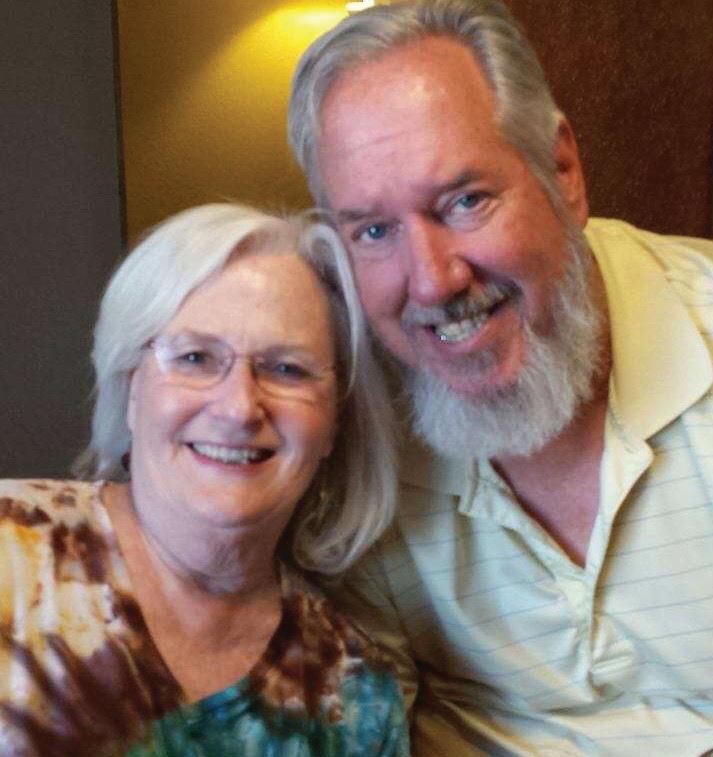

Janet was born in South Bend, Indiana, the youngest of six children of Harry and Esther Shcolnik. The family moved to Phoenix in 1957.
“I’m a shirttail cousin to Rabbi (Albert) Plotkin,” Janet, whose family became members of then-Temple Beth Israel, told Jewish News in 2007. “He was the first one to meet us when we got off the train when we moved here.” Plotkin and her father were two of the only Jewish alumni of the University of Notre Dame, and Janet made sure that her two sons, Josh and Mason Arnold, were aware of those and other family details.
“We had a big family and she went above and beyond to make sure we all stayed connected, especially as we got older and moved away,” said Josh Arnold. He lives in Madison, Wisconsin while his brother lives in Maui, Hawaii.
After earning a master’s at Arizona State University at 21, Janet taught English at Glendale High School, married her first husband and had two sons. “She was creative, intuitive and when she loved you, you felt like you could do anything in the world because you had her behind you,” Josh said.
Janet prioritized her family connections, but she also loved making connections among the Jewish community, where she was nearly ubiquitous.
“Connect is the word you use with her,” Tom said. “She loved to do that. She laughed that she was an old-fashioned switchboard operator, because she connected everyone with everyone and took great joy in that.”
Janet held a variety of positions in different Jewish organizations over the years; she was an associate editor of Arizona Jewish Life and sat on the board of directors of
the Greater Phoenix Jewish Film Festival and the Arizona Jewish Historical Society, in addition to founding the Arizona Jewish Theatre Company.
Martin Shultz, who also has a long résumé of civic and Jewish communal involvement, knew Janet from the time the city’s Jewish Community Center was on 16th Street and Camelback Road. He was chairman of the JCC’s board more than once and “had a reputation for raising money in the Jewish community,” he said.

Thus, when Rees had the idea to start a Jewish theatre company, it was Shultz she turned to early.
“She came to me and said, ‘Here’s what I want to do.’ And she did it, and she was passionate about it,” Shultz said.
He and his wife were season-ticket holders and enjoyed many performances over the years. He said “extraordinary” was the only word to describe her achievement. “It was an extraordinary commitment,” he said. “She did it for 25 years, and the quality was excellent. It was mostly a labor of love.”
Janet once quipped she didn’t even know there was such a thing as Jewish theatre, so founding AJTC wasn’t on her radar until the late 1980s. She was cast in a show at the nowdefunct Glendale Little Theater, directed by Bob Walters. When he asked her to be part of another play, she declined but helped him get rehearsal space at the JCC.
“He called to thank me for getting the room,” said Janet. “He said, ‘I found a book of three Jewish plays (by Israel Horovitz), and I’d like to direct one as a gift back to the Jewish community.’ So I read these plays and I said, ‘Let’s start a Jewish theater.’”

Meanwhile, she was accepted to ASU’s law school, but decided the community needed a theatre more than another lawyer, according to Josh.
“I thought, ‘lawyer? actor?’ Well, lawyers don’t have any fun, so I started the theater.
I always thought I could run a trucking company if I had to,” she told Jewish News in 2007. Josh said that sentiment encapsulated so much of who she was. She didn’t have a business plan, but she did have good intuition and instincts. “She just figured out what needed to be done, and she got it done,” he said.
Janet also learned about the Association of Jewish Theatres (AJT). “I didn’t have a clue. I made a call and they were having a conference
in New York City, which I went to. Now I had a network of people. Not only was there the Horovitz work, there was this whole world out there.” She later served as president of AJT for a time, too.
As this was unfolding in 1987, Janet also celebrated a joint b’nai mitzvah with Josh, which Plotkin officiated.
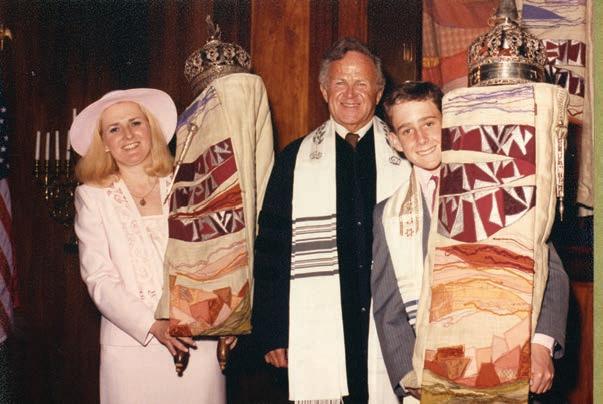
“It was such a joy because she wasn’t able to have a bat mitzvah growing up,” Josh said. “It was an opportunity for her to reconnect with her Jewish education and Jewish roots. I recall being up on the bimah with her singing one of the prayers together. I remember how joyous it was to be able to have that duet with her, almost like a performance.”
Performing came naturally to Janet, but even with all her success during 25 years of running AJTC, the theatre she had worked so long and so hard for finally closed its curtain in the summer of 2012 due to lack of funds.
“I didn’t see any avenues of money that could come in. I couldn’t do this anymore. It just seemed to me that it was time,” she told Jewish News then. It was a painful decision. “It’s hard. I’d put this up against a divorce or a death any day,” she said.
But that was not the end of her career in the Jewish community by a long shot and she continued to be a key player in making connections. Leisah Woldoff, writer and editor at Jewish News for 17 years, testified to that, saying “she was passionate about connecting people and always willing to provide resources when asked, and she did it with kindness and humor.”
In 2019, Rees found a Jewish News article from the 1990s in which she was featured.
It had quoted her as saying that her dream was “to develop cooperative Jewish leadership emphasizing needs in Jewish education and social services, utilizing theater and the arts to promote and preserve pride in our cultural heritage.”
More than 20 years later, she asked, “Do you want to know what’s funny? That’s still my dream. It hasn’t changed at all.”
In continued service of her dream, Janet was hired by JFCS in 2015 to head its thennew Senior Concierge program. Her job was to network with senior centers, independent living facilities, synagogues and Jewish agencies. Until the COVID-19 pandemic, she was posted at the Martin Pear JCC where she also answered walk-up requests
JEWISHAZ.COM JEWISH NEWS DECEMBER 3, 2021 3
HEADLINES REES CONTINUED FROM PAGE 1 @ Arizona’s Only Jewish Funeral Home @ Arizona’s Only Member of the Jewish Funeral Directors of America @ Arizona’s Only Jewish Owned & Operated Funeral Home @ Arizona’s Only Funeral Home Endorsed by the Entire Rabbinical Council Perlman Family (602) 248-0030 4538 North Sixteenth Street Phoenix, Arizona 85016 www.sinaimortuary.net email: office@azsinai.com A Jewish Cemetery that cares about the Jewish Community • Jewish Owned and Operated • Sidewalks at Every Grave • Caring Professional Sta • Intermarried Families Welcome (480) 585-6060 24210 N. 68th Street, Phoenix (o Pinnacle Peak Rd) mtsinaicemetery.com
SEE REES, PAGE 7
Janet and Josh celebrating their b’nai mitzvah with Rabbi Albert Plotkin officiating. COURTESY OF JOSH ARNOLD Janet and her husband, Tom Rees COURTESY OF TOM REES
‘I am a progressive because I am a Zionist,’ says Arizona Rep.
NICOLE RAZ | STAFF WRITER
Arizona House Rep. Alma Hernandez (LD-3) gets flak for being a progressive Zionist.
“Sometimes I am being told, ‘You have to pick one side or the other; you can’t be both,’ or ‘You have to check one of your identities at the door,’ and I refuse to do that,” Hernandez said during a Jewish National Fund-USA panel discussion on Nov. 16.
She’s not the only one. U.S. Rep. Ritchie Torres (NY-15) said he was taken aback by the “overwhelming hatred” and “vitriol” he got when he announced he was going to visit Israel with a delegation in 2014 as a New York City Councilman.
“Over time I came to realize there was a dangerous idea percolating in progressive politics: the idea that you cannot be both pro-Israel and progressive, which is a vicious lie,” he said.
Hernandez and Torres spoke about being progressive Zionists as part of JNF-USA’s “This is What Zionism Looks Like” campaign launched in August.

JNF-USA created the campaign to “reclaim” the meaning of the word “Zionism,” said its CEO, Russell F. Robinson. “The word ‘Zionism’ has been hijacked from us.” The campaign includes a social media effort, online events, boot
camps, educational courses and panel discussions focused on the “beauty, the substance, the building, (and) the commonality that Zionism brings.”
Hernandez, the first Mexican-American Jewish person ever elected to office in the U.S., said Israel is the epitome of progressive values.
“All of the issues that we’re talking about — whether it’s women’s health, health care, LGBTQ rights — all of the issues that I care about are all issues that Israel has been at the forefront of for years. This is the only democracy in the Middle East, the only place that we know has actually given people dignity and respect and allowed them to serve in government.”
Last year, when Torres was sworn into Congress, he was the first openly gay Afro-Latino American in the legislative body. He also sees Israel as reflective of progressive values.
“One of the purposes of Israel is to protect a historically oppressed people from a repeat of our worst history.
If that’s not progressive, then I’m not sure what would be,” he said.
“Progressivism is about the struggle for liberation, and Zionisim is the struggle for Jewish liberation.”
He said that he and other progressive Zionists have an obligation to speak out. “We cannot allow ourselves to be drowned out or crowded out by the extremes,” he said. He also hopes to see up-and-coming generations embrace and spread the message that they are proIsrael because they are progressive, not in spite of it.
A few years ago, every leading Democrat staunchly supported Israel as a key U.S. ally. But today’s Democratic Party is no longer a monolith when it comes to Israel — and neither is the American Jewish population.
A May survey by the Pew Research Center survey found that 82% of all American Jews said that supporting Israel was essential or important to “what being Jewish means to them.” The same number also identified as liberal or moderate, and a large majority said they leaned Democratic. Yet, among Jews under 30, Pew found lower emotional attachment to Israel, and higher support for the Boycott, Divestment and Sanctions movement.
Hernandez hopes newly-bolstered Holocaust education programs will help students of all backgrounds to better understand Zionism.
“We need to teach, especially the younger generations, about the horrors of the past to ensure that it never happens again,” she said.
A national survey found last September that “when asked how many Jews were killed during the Holocaust, 63% of Millennials (those ages 25-40) and Gen Z (those ages 18-24) did not know 6 million Jews were murdered.” That figure climbed to 67% in Arizona. The survey, commissioned by the Conference on Jewish Material Claims Against Germany, also found 11% of national respondents — 15% in Arizona — believe Jews caused the Holocaust.
“And that’s because we haven’t done a good job of teaching these things,” Hernandez said.
She first introduced a bill mandating Holocaust education in Arizona three years ago. It passed the state legislature in July and went into effect Sept. 30, 2021.
“It was not an easy feat to get Holocaust education done in Arizona,” she said. “You’d think it would be easy, because it should be a no-brainer, and it should be something that most people care to learn about and care for the children to learn about.”
Arizona is now one of 21 states with legislation requiring or encouraging Holocaust education. Hernandez said students need to understand that Israel would not exist without Zionism. JN
See all past episodes of JNF-USA’s Conversations on Zionism series at youtube.com/zionismstudios. To view and register for upcoming episodes, visit jnf.org/convos.
HEADLINES
LOCAL 4 DECEMBER 3, 2021 JEWISH NEWS JEWISHAZ.COM
Clockwise from top left: Tremayne Smith, Rabbi Menachem Creditor, Reps. Alma Hernandez and Ritchie Torres discuss progressive Zionism during a Jewish National Fund-USA panel on Nov. 16 as part of its Conversations on Zionism series. SCREENSHOT BY NICOLE RAZ
"THE IDEA THAT YOU CANNOT BE BOTH PRO-ISRAEL AND PROGRESSIVE IS A VICIOUS LIE."
Jewish dispensary owner wants to see more women in control
NICOLE RAZ | STAFF WRITER
Lilach Mazor Power wants to see more women in the local cannabis industry.
“I see all these opportunities in my industry and I see women not grabbing them,” she said.
Power is the founder and CEO of the Giving Tree Dispensary, a vertically-integrated company that does cultivation, extraction, manufacturing, packaging, logistics, wholesale and retail.
The Giving Tree Dispensary in Phoenix is the only majority woman-owned cannabis dispensary in Arizona. Power, who is Jewish and grew up in Israel, spoke with local members of the National Association of Women Business Owners (NAWBO) Nov. 10, about her industry and where women fit in.

In 2019, women held 37% of cannabis C-suite positions, substantially more than in other industries, according to Marijuana Business Daily. But a 2021 report by the National Cannabis Industry Association and The Arcview Group found that only 8% of cannabis CEOs are women.
“The number of women in leadership and ownership in the cannabis industry is declining,” Power said. “And in 2021, with a completely new industry, it’s very discouraging.”
At the same time, the number of women using cannabis is rising. According to CBD and cannabis-focused market research company the Brightfield Group, the proportion of female cannabis users rose steadily during 2020, reaching 51% in the first quarter of this year.
Power sees it all unfolding firsthand.
“Our brands are more focused on women, but we do see more women are interested and are coming in to ask questions,” she said. Arizonans voted to legalize medical marijuana in 2010, with the first medical marijuana sales starting in Dec. 2012. Recreational cannabis was legalized in November, and sales began in January.
With legalized recreational use relatively new, there are still some misconceptions and stigmas attached.
“A lot of people don’t understand the different ways to consume cannabis,” she said. “We all have that stigma in our head of someone smoking a joint, and passing it around to a bunch of stoners.”
Many of Power’s customers are moms who use capsules, she said.
“When you say, ‘cannabis,’ people raise an eyebrow, but when you say, ‘Hey, I’m going to have a couple of glasses of wine,’ that’s OK,” Powers said. “I’m really trying to educate women on the different ways to use and consume it. We now have a cannabis-formenopause line.”
Despite the growing curiosity and acceptance on behalf of women cannabis users, Powers still sees hesitancy among women to enter the business side. When she approaches women
about working in the industry, sometimes they’ll express concern about having a cannabis experience listed on their resume, or they’ll express concern about the stability of the industry, she said, given all marijuana remains illegal at the federal level.
“There is a lot of risk, but with that comes a lot of opportunity, so it depends on how you look at it,” she said. “I see it more as an opportunity.” She doubts NAWBO would have invited her to speak even a few years ago.
According to a recent study by market researcher New Frontier Data, the U.S. legal cannabis market is expected to pull in $43 billion by 2025.
Power believes being a majority woman-owned company makes Giving Tree stand out — even in the way she designed the dispensary, she said.
The 15,000-square-foot facility features open space with seating areas for people to spend time and ask questions. Power also focused on capsules, because she believes they are not as intimidating to women users as other forms of cannabis. “We’re all used to picking capsules, and there’s no sugar, and people don’t want to smoke,” she said.
Rosaria Cain, president of NAWBO’s Phoenix chapter, said when Arizona voters gave recreational cannabis the green light, the cannabis industry became relevant. “NAWBO is looking for relevant, interesting content that is relevant to business women in Arizona,” she said. “With cannabis being approved by voters for adult use last year, it is a trending topic.”
Power’s Nov. 10 presentation was NAWBO Phoenix’s first time featuring a leader in the cannabis industry.
Cain said Power’s path is a great example for all women leaders. “She genuinely wants to see equity in all careers, including cannabis.”
Sandra Guadarrama-Baumunk, co-chair of programming for NAWBO’s Phoenix chapter, said Power, along with other women-owned dispensaries, have set themselves apart by trailblazing career paths for other women. It is disheartening that there is still such a wide gender gap, Guadarrama-Baumunk said.
“That’s why it’s still so important that we help to support female leaders like Lilach so that they can make a difference.” JN
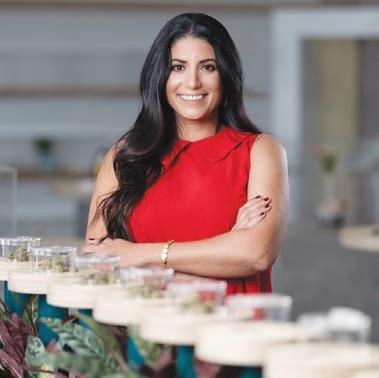
HEADLINES
LOCAL JEWISHAZ.COM JEWISH NEWS DECEMBER 3, 2021 5 discover@amhsi.org 800.327.5980 SPEND A SUMMER IN ISRAEL at Alexander Muss High School in Israel Merit-Based Scholarships Available to Arizona Teens GRACIOUSLY FUNDED BY Lori & Adam Miller For more information contact Jennifer Sosnow at jsosnow@jnf.org or 480.447.8100 x983 or visit amhsi.org/miller
As pandemic drove Judaism online, Chabad invests in future in-person growth
NICOLE RAZ | STAFF WRITER
Chabad of North Phoenix Rabbi Mendy Levertov and his wife, Leah, are looking forward to making their Chabad center better suited to their needs.
They’re considering expanding the sanctuary, upgrading the kitchen and, maybe, adding sensory and art rooms for the kids and adults who are part of Friendship Circle, which supports people with special needs.
After about 10 years of renting their building, they closed on the property the last week of October.
“When you can give your community and your program a sense of permanency, it’s the right thing to do,” Mendy said.
The real estate transaction represents just one of dozens of investments by Chabad in new buildings or in renovating and expanding existing properties.
While many Jewish institutions are unsure about what the future holds for their physical spaces after a year and a half of largely digital engagement — and after decades of declining synagogue membership for Judaism’s largest American denominations — Chabad is betting on its capacity to attract large numbers of people to its centers.
The movement has embarked on at least $137 million in real estate projects since the start of the COVID-19 pandemic, according to numbers compiled by Chabad.org and reviewed by the Jewish Telegraphic Agency.
Rabbi Zalman Levertov, the leader of Chabad of Arizona, said he isn’t sure of the exact figure local Chabads have invested in real estate projects since last March, but there are several such projects in the works.
Mendy said Chabad of North Phoenix’s building cost $2 million. He secured a mortgage of just over $1 million, and raised about $700,000 in the three months the deal was in escrow.
When the building became available to buy, it was a no-brainer, he said.
“Judaism is a face-to-face religion,” Mendy said. “You need that sense of individual connection, specifically for Friendship Circle.”
The pandemic made many people long for meaningful connection, especially after being isolated or limited to virtual meetings for so many months, he said, noting he is “setting the groundwork” for when people are ready to indulge their need for in-person get-togethers.
Zalman agreed. “Our job is to reach out to every single Jew. We still need to focus on that even if people
don’t want to come,” he said. When the time comes, Chabad will be ready to host in-person study sessions, prayer and gatherings — be they indoors or outdoors, Zalman said. “Many people are craving to be with each other rather than to be by themselves,” he said. “Some people are sick of virtual services or study.”
and building stages of a prefab classroom building, which will be added on-site for a cost of at least $300,000 to supplement its larger expansion plans.
“The expansion is not happening fast enough and the growth is happening a little faster with the pandemic and people moving in, so we had to fast-track a little bit,” he said.
A 30-minute drive to a mikvah is difficult during the week, and “impossible” on Shabbat, he said. “They wait, or some people go to a hotel — it’s a major inconvenience.”
He estimates the mikvah is about two years out from being built. He’s in the early stages of the design process, and hopes to break ground in about eight months.
“It’s definitely supporting current needs, but also we feel that this will serve those who are moving to the area and looking for more Jewish infrastructure,” he said.
In Tucson, Rabbi Yossie Shemtov led the purchase of a $1 million building for the Lamplighter Chabad Day School of Tucson. “We are now investing another half a million in renovating it.”

Chabad centers around the country have been investing in capital projects and scooping up buildings, largely funded by donations.
“They represent people from large donors to large numbers of small donors like college students who are committed to supporting Jewish life and programs that inspire them with whatever they can based on their means,” said Rabbi Motti Seligson, a Chabad spokesperson.
Even before the pandemic growth spurt, Chabad had already engaged some 37% of American Jewish adults in activities, according to a recent survey by the Pew Research Center, and trends point to continued growth.
Chabad of Arizona’s Aleph Bet Preschool and Kindergarten is expanding faster than expected, prompting more capital projects than anticipated. Rabbi Dov Levertov, who directs the school with his wife, said the preschool’s growth has been “slow and steady” for the past few years. He and his wife planned to convert two rows of office space inside the Chabad-Lubavitch of Arizona facility into classrooms, but now they can’t do it fast enough.
In the 2019-2020 academic year, there were fewer than 70 kids enrolled. But in the current 2021-2022 academic year, there are 80 kids enrolled, and Dov has had to turn families away.
He said the school is in the final permit
Rabbi Menachem Mendel Schneerson was a strong advocate of buying over renting, Zalman said. “Also the Rebbe wanted that we should expand in a way that you’re not thinking just of now, you’re thinking of the future,” he said.
Chabad of the East Valley Rabbi Mendy Deitsch is about halfway through raising $500,000 to build a mikvah on the property. East Valley residents currently have to drive about 30 minutes to get to a mikvah.
“As a result of the pandemic, there was a limit on the availability, or there were time constraints, travel constraints and we felt that our community was asking for it; people need it,” Deitsch said.
Over the past 20 years, the number of Chabad synagogues in the United States has nearly tripled, reaching 1,036 in 2020, according to a tally by Joel Kotkin, a Chapman University professor who studies demographic trends, and independent researcher Edward Heyman. Over that same period, the overall number of synagogues declined by 29%.
While many Chasidic groups are growing primarily through procreation, Chabad, focused as it is on outreach, appears to be picking up a significant chunk of the Jews who have disaffiliated from the Reform or Conservative movements or who have never had much of an institutional affiliation to begin with. In its recent survey, Pew estimated that among Chabad participants, 24% are Orthodox, while 26% are Reform, 27% are Conservative and 16% don’t identify with any particular branch of Judaism. JN
HEADLINES
LOCAL 6 DECEMBER 3, 2021 JEWISH NEWS JEWISHAZ.COM
Additional reporting from JTA.
"WHEN YOU CAN GIVE YOUR COMMUNITY AND YOUR PROGRAM A SENSE OF PERMANENCY IT'S THE RIGHT THING TO DO."
The exterior of the Chabad Lubavitch Center in Phoenix.
PHOTO BY NICOLE RAZ
and introduced seniors at the facility to the program.
Ellie Schwartzberg, JFCS’ vice president of older adult and Jewish community services, knew of Janet’s work at the theatre and elsewhere and was excited when she applied for the job. “As soon as I interviewed her I knew she would be perfect,” Schwartzberg said.
Janet’s intelligence and enthusiasm were key to the work. She created a database and always went the extra mile to find necessary resources, in addition to giving JFCS more visibility with her aptitude for publicity.
And Janet’s tenacity was legendary,
















the potential of what she could bring to the agency.” The two worked together closely and when Rood had the idea for Memory Cafe, a service for people with cognitive impairment and their care partners, “Janet was really the one that helped to move it forward in an artistic way.”
For Rood, there’s no replacing the kinds of ideas and connections Janet could offer. “There will never be another Janet,” she said.


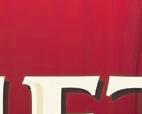
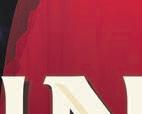

Jennifer Brauner, director for JFCS’ Center for Senior Enrichment, echoed that sentiment. The two always bounced ideas off one another but it was during the pandemic when their relationship deepened into a true

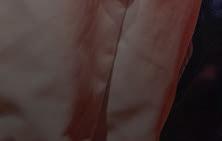
ranged from 65 to 93, she helped them use technology platforms and didn’t let others' skepticism dissuade her from offering programming for Holocaust survivors on Zoom. She believed they could do it, so they did too.
When JFCS added the Creative Aging program to her plate, she proved to be the perfect fit, Schwartzberg said.
That’s where Susan Guzman really got to know Janet after having met her years earlier in the theatre. Everyone loved watching Janet perform, Guzman said. “She just loved to have a good time. She wasn’t afraid to mess up. She was just great, and she was a wonderful actress.” She noticed Janet offering voice lessons and suggested to Janet that she form a choir for seniors and offer it as a Creative Aging class. “That’s how the Sunshine Singers came to be,” Guzman said. Her only regret is that Janet won’t get to perform with them now that they’re rehearsing in person once again.
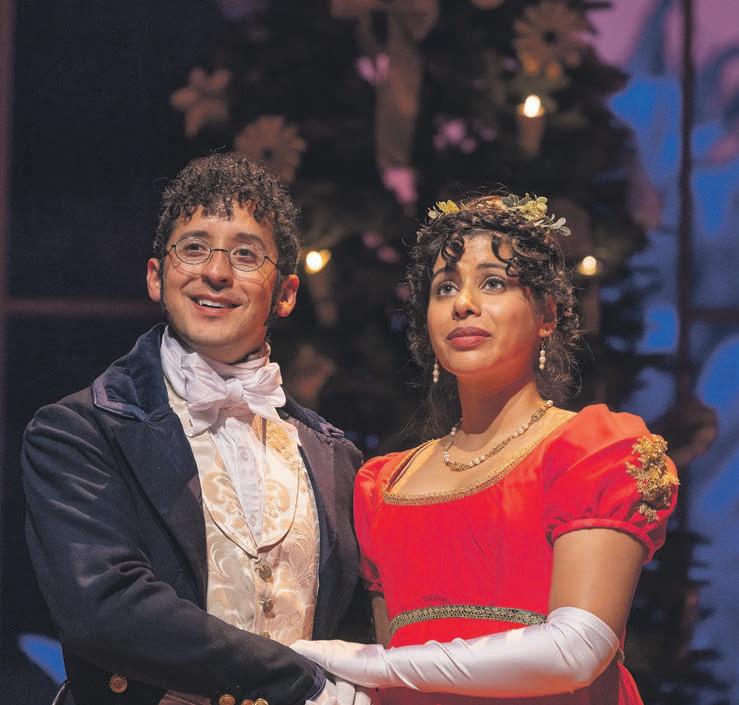
Janet made a big impression on all the ranks of JFCS.
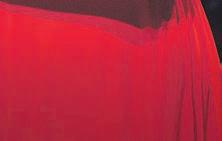
Kathy Rood, manager of JFCS’ Jewish programs, knew of Janet before she took the job as “this dynamic, creative individual and



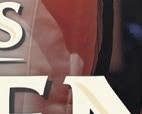






my ghost writer getting the word out in the community,” she said.

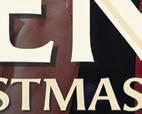
In July, Brauner wasn’t ready to go back in person, but Janet was and she led the oncea-week in-person program for CSE. She told Brauner, “I need my people and I need to feel complete again.”
As much as Brauner valued Janet as a colleague, it’s her friendship she’ll miss most. Janet was often the first call or text of the day. Then, a week before she died, Janet sent her a text saying simply, “I’m thinking about you,” with a heart emoji.
She is survived by her husband, Tom Rees; her sons, Josh and Mason Arnold; her sister Linda Ratcliffe; her sister-in-laws, Noreen and Bonnie Shcolnik; her ex-husband, Charles “Chick” Arnold; her many nieces, nephews and cousins; and her dog, Buddy. JN
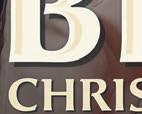
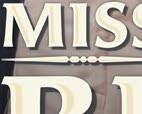
Family and friends have established a philanthropic fund in Janet’s name at the Jewish Community Foundation of Greater Phoenix. The Janet Arnold Rees Fund at JCF is dedicated to honoring her legacy by supporting causes she held dear over a lifetime of service to the community, to her friends and to her family: Jewish arts and education, theatre, creativity and innovation in supporting people of all ages, of all religious affiliations or no affiliation. To donate, go to jcfphoenix.org.
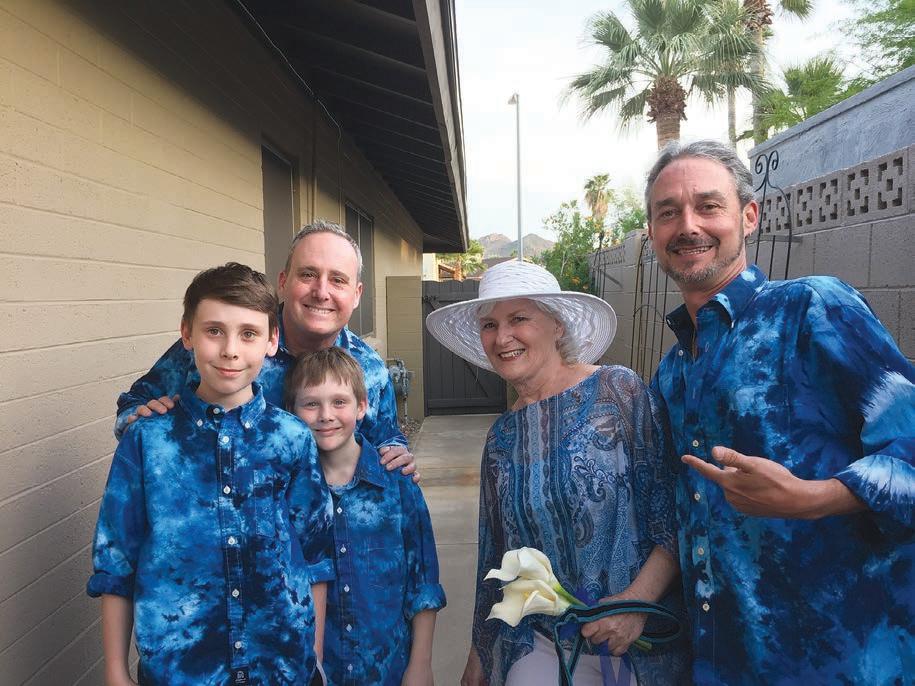
JEWISHAZ.COM JEWISH NEWS DECEMBER 3, 2021 7
HEADLINES REES CONTINUED FROM PAGE 3 DECEMBER 9 – JANUARY 2 B Y LAUREN GUNDERSON & MARGOT MELCON DIRECTED BY SEAN DANIELS ATC AT THE HERBERGER THEATER CENTER 222 E. MONROE ST. PHOENIX ATC.ORG / 833-ATC-SEAT TICKETS ON SALE NOW! SEASON
I.
“ … a perfectly constructed love story … and given its fizzy comedy, sweet spirit and clean structure, it seems destined to populate future holiday seasons …” —San Francisco Chronicle “Jane Austen’s humor, playfulness and wit in A WARM-SPIRITED HOLIDAY THEATRICAL PRODUCTION. ” — DCMetroTheaterArts.com
SPONSOR
MICHAEL & BETH KASSER PRODUCTION SPONSOR
Janet Arnold Rees poses with her sons and grandsons at her backyard wedding ceremony to Tom Rees. COURTESY OF JOSH ARNOLD
Phoenix member of Jewish group opposed to circumcision feels like ‘part of a secret club’
that goes back to the Bible and which is widely practiced across the spectrum of Jewish observance, even by otherwise non-observant Jewish families. Targovnik has known the group’s founders for years and hosted Eliyahu UngarSargon in Phoenix in 2011 when he was making the rounds with “Cut: Slicing Through the Myths of Circumcision,” his documentary opposing circumcision. She is also a member of the organization’s chavurim, where they gather on Zoom to plan next moves.
“Families who are making this decision shouldn’t feel marginalized and they shouldn’t feel like they have to be secret about it,” said Lisa Braver Moss, Bruchim’s co-founder and president.
film in the course of her research, her 2-yearold daughter was sleeping, but a scene with a baby screaming during his circumcision caused her to cry out in her sleep, and Targovnik asked herself, “if my sleeping daughter can realize this is hurting a baby, how can other people not realize it?”
In the end, she concluded “it wasn’t my decision to make for my son.”
Instead, she and her husband opted for the brit shalom ceremony. After being rejected by several rabbis, Temple Solel’s Rabbi John Linder agreed to do it.
The Reform movement does not have a policy about how to handle families who are considering or have decided not to circumcise. But the movement’s leader, Rabbi Rick Jacobs, said in a statement that ritual circumcision remains something his movement “will always advocate” for — even as other choices are accepted.
gone far too long in exclusion, of keeping people out — we’d rather bring people in.”
Dorff, on the other hand, said that advertising openness to non-circumcising families, one of Bruchim’s main asks, is not something that he would endorse.
“Do I want to say publicly, even though it’s certainly true, that people who violate Shabbat publicly are welcome in our community?” Dorff said. “Of course they’re welcome in our community. But I don’t want to say publicly that it’s wonderful that you violate Shabbat.”
Diane Targovnik just set the date for her son’s bar mitzvah in 2023. He’s only 11, but she wanted to get it on the books. When he was born, she and her husband decided against circumcision. Since then, they have lost Jewish community over their decision. Part of that loss includes cutting ties with their longtime Conservative synagogue in Greater Phoenix.
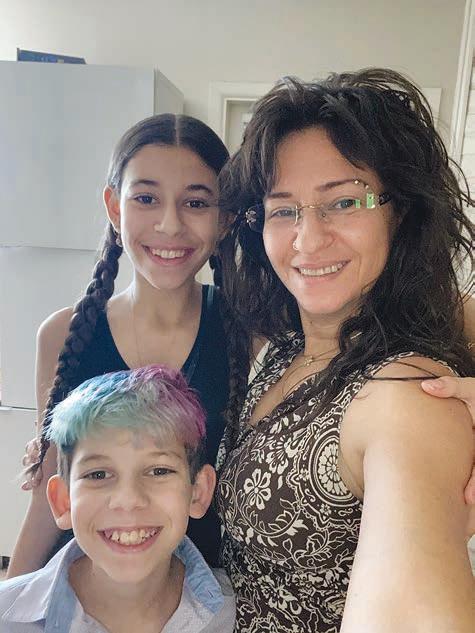
In 1981, the Conservative movement’s Jewish law authorities recommended including non-circumcising families in synagogue life but denying uncircumcised boys a bar mitzvah. Although Rabbi Elliot Dorff, the current leading bioethicist of Conservative Judaism, said there is no basis in Jewish law for that denial, there has not been a formal statement refuting the original opinion.
Targovnik was born and raised in that tradition, but recently, she joined a local independent synagogue in its place — one that would permit her son to have his bar mitzvah and full membership in the Jewish community.
She said not having the circumcision was one of the hardest decisions she ever made, but even though members of her family are still upset with her, it was still “probably one of the decisions I’m most proud of. My role as a Jewish mother is to protect my son and that’s what I felt like I did.”
A new organization called Bruchim (Hebrew for “welcome”), is seeking to normalize the decision not to circumcise Jewish boys, a venerable religious rite
The group is an outgrowth of advocacy that Moss and Bruchim co-founder and executive director, Rebecca Wald, have been doing for decades. Moss first argued against Jewish circumcision in a 1990 essay, and together they outlined an alternative ceremony, brit shalom (literally “covenant of peace”) in a 2015 book and distributed flyers at that year’s Reform movement convention outlining ways for synagogues to be more welcoming for families that had opted out of circumcision.
Now, in Bruchim, they have a volunteer staff and a four-member rabbinical advisory board. The team includes people with professional backgrounds in all of Judaism’s non-Orthodox movements, as well as several people who grew up Orthodox.
Among its objectives, Bruchim wants to see synagogues make proactive statements of welcome for non-circumcising families similar to those that have become common toward Jews of color and LGBT+ Jews. They also hope rabbis will offer one of several alternative welcome ceremonies for newborns in place of the traditional bris.
Before Targovnik had her first child, a girl, she had always seen the ritual of circumcision as “something beautiful and normal.” In fact, when she first heard about opposition to circumcision in some corners she “had a knee-jerk reaction that it was antisemitic.” But she wanted to know more in case she would ever have a son.
The more research she did, the more she became convinced circumcision was unnecessary and “I knew in my heart of hearts that it was wrong,” she said.
When she first watched Ungar-Sargon’s
“As one of the oldest rituals in the Jewish faith, we will always advocate and educate our community about the beauty and meaning of brit milah,” Jacobs said. But he added, “Connecting oneself to the Jewish community may take many forms, and we understand that some families and individuals are making the choice to not circumcise as part of the brit ceremony. There will always be a place for everyone in the Reform community, regardless of how they or their family choose to express their faith.”
Linder said he has not done another such ceremony but has no regrets about doing the brit shalom for Targovnik. “I have had very difficult conversations with parents and grandparents around this issue, when someone struggles with the ritual of circumcision. (Targovnik) is someone I experienced as a very committed Jew, who wanted to create a naming ceremony for her son that did not include a brit milah. My logic for the decision is similar to when I decide to officiate a Jewish wedding for a Jew and a non-Jew — it’s based on wanting to keep someone in the community who is making a commitment to raise children as Jews and to create a Jewish home.”
Linder said he wouldn’t hesitate doing another brit shalom, although he doesn’t promote it and understands why some of his colleagues would oppose it.
OR ADAM Congregation for Humanistic Judaism Rabbi Jeffrey Schesnol said his tradition welcomes all people who identify as Jewish with “no litmus test, including circumcision.”
“After thousands of years of discrimination and living in Diaspora, our attitude is that you’re welcome here if you want to make a connection with us,” he said. “We’ve
No reliable statistics exist on the percentage of American Jewish men who are circumcised, though the vast majority are believed to be. In part, that’s because circumcision is performed on the vast majority of American boys — some 90% of non-Hispanic whites, according to a 2014 study, making the U.S. a global outlier on this issue. But that figure appears to be dropping.
Critics of circumcision object to the practice on a number of grounds, including the physical and emotional trauma inflicted on children, a conviction they lack the right to modify someone’s body without permission and a belief that there is no medical benefit for the child. The position of the American medical establishment is that the benefits of circumcision outweigh the risks.
The broad societal trend, coupled with the fact that 72% of American Jews who married between 2010 and 2020 chose a non-Jewish spouse, according to the 2020 Pew study, means that while the numbers of Jewish parents who choose to leave their children “intact” is almost certainly a tiny minority, their numbers are likely to be increasing.
Targovnik said she is part of a growing movement, but admitted “it is hard when you go to a new synagogue and try to find out if there’s anybody else who made the same decision.”
She has found others. “I know people who circumcised their first son and didn’t do it with their second,” she said. “It takes a lot of wonderful chutzpah to realize you made a mistake.”
Wald said that the taboo nature of the subject keeps people from discussing it openly. “But all this is changing very quickly,” she said, via email. “In five or 10 years, maybe even sooner, the choice not to circumcise will be respected as a valid Jewish choice.”
Until then, Targovnik said she feels like a member of a “secret club. But then you find other people made the same choice — mothers especially have done a lot of thinking about it. I wasn’t the first, and I won’t be the last.” JN
HEADLINES
LOCAL 8 DECEMBER 3, 2021 JEWISH NEWS JEWISHAZ.COM
Diane Targovnik and her two children PHOTO BY DIANE TARGOVNIK
Phoenix girl uses bat mitzvah
THE HIT NEW YORK COMEDY

When the family travels home for a winter visit, Steve is thrown together with all his dysfunctional kin in a riotous seasonal celebration.
We attend a family dinner at Grandma’s where, if you’re under 55 you still sit at the children’s table, and 35 over-fed people share one toilet! From the creator of My Mother’s Italian My Father’s Jewish & I’m In Therapy, we bring you a new show for the winter season.

“Hysterically Funny!
-
“A Funny Look At Family Relationships!
An Entire Family Wrapped Up In A One-Man Show!”
- WCBS TV
“As Heartwarming As Comfort Food.
Everyone Can Relate to This!”
- Martha Stewart Living Radio
first ever in-person 5K run to raise celiac disease awareness and bring together the celiac community. Sixty-five people attended, including local gluten-free social media influencer Katelyn Duffy, known as eatglutenfreeaz on Instagram.

Elana Kutz, Emery’s mother, follows Duffy on Instagram, and asked her to share the information about Emery’s 5K with her followers. “It was really awesome that she came,” Elana said.
Duffy said she could have benefited from the event Emery organized when she was first diagnosed as a kid 14 years ago. “It meant a lot to me to be able to support her online through Instagram and by showing up to run. I have had celiac disease for 14 years now and it was so exciting for me to meet others in my community that experience the same struggles.”
As of Nov. 21, Emery had raised more than $5,500.
“I am blown away that an 11-year-old was able to bring together 50+ people and raise over $5,000 for celiac disease,” Duffy said. “It is amazing to see someone so passionate about helping others.”
Emery got four cases of bottled water donated from a local Trader Joe’s. A local Sprouts donated a gift card to be given to the winner of the run and Gluten-Free Creations Bakery donated some gluten-free cookies.
“My bat mitzvah project has helped me be ready to become a bat mitzvah because it’s helped me to learn how to do something on my own and to be more independent,” she said.
Her bat mitzvah at Congregation Or Tzion is scheduled for May 14.
Elana said having celiac disease has made
“We’ve always thought it would be really cool if we had an organized event here locally, but I never wanted to be the one who planned it,” she said.
Elana is proud to see her daughter take the idea and make it a reality, she said.
“It has been so meaningful to see Emery confidently speak to others about celiac when sharing her story, asking for donations for her 5K and wanting to make a difference,” she said. “Emery has demonstrated passion, bravery and maturity with this project.”
As soon as Emery was diagnosed when she was a year old, Elana felt she needed a support group. “I didn’t know anyone with celiac disease,” she said. She heard about a group in another city called Raising Our Celiac Kids, and started a Phoenix chapter. She organized several annual events, like educational sessions for parents and a Halloween trunk or treat, where everybody could come knowing the candy was safe.
The group is still active, and called Generation GF, but Elana is no longer running it.
Elana always wanted Emery to grow up with other kids like her, and, at the same time, it’s been helpful for Elana to have a group of moms to turn to and share ideas about new products, restaurants, sleepaway camps or other gluten-free parenting situations.
Elana and Emery hope to make the 5K an annual tradition to bring the Phoenix celiac community together.
“Community is very special because it makes people know that they’re not alone and there’s other people like them that are going through the same thing,” Emery said. JN
Box Office: 602-252-8497 Groups (12+): 1-888-264-1788 HerbergerTheater.org or PlayhouseInfo.com
For more than 90 years, American donors have provided vehicles, training, and supplies to Israel’s national paramedic and Red Cross service, equipping them to treat the sick and injured under the most di cult circumstances and to save lives.
In fact, this past year Magen David Adom’s 30,000 EMTs and paramedics have been on the front lines in the fight against coronavirus while also contending with terrorist and rocket attacks, riots, car accidents, and other threats to Israeli lives.

If you want to make a real di erence in Israel, no other organization has a greater impact on its people than Magen David Adom.
Make an end-of-year donation at afmda.org/saving-lives-2021
afmda.org
HEADLINES
LOCAL JEWISHAZ.COM JEWISH NEWS DECEMBER 3, 2021 9
Non-Stop Laughs All The Way!”
Regis Philbin, Live With Regis & Kelly
Starring Peter Fogel
Wed 7pm, Thur 2 & 7pm, Fri 8pm, Sat 2 & 8pm, Sun 2pm
Philip Roger Roy Presents
DEC. 29 - JAN. 30, 2022
222 E. Monroe, Phoenix, AZ 85004
It’s not too late to save a life in Israel this year.
Photo by Kobi Gideon / FLASH90
The Visa Waiver Program challenge
Apart from the ever-changing rules for entry that are driven by the pandemic and related health concerns, Americans are afforded free access to Israel and don’t need short-term visas to enter the country. The same is not true for Israelis who want to visit the United States to tour or do business for less than 90 days. The U.S. Visa Waiver Program — which makes entering this country simple for citizens of 40 countries from Andorra to the United Kingdom — does not include Israel.
To make matters worse, the visa process is so backed up that the backlog for Israeli applicants stretches to August 2022. All this is common knowledge in Israel, but not that well known to most American Jews. So, it was interesting to learn last week that a bipartisan group of
58 House members signed a letter calling for Israel’s inclusion in the U.S. Visa Waiver Program — an idea that is very forcefully supported by many Israeli leaders, including Ayelet Shaked, Israel’s Interior Minister.
There are two principal reasons why Israel is not part of the waiver program: First, it requires that before eligibility can be considered, the U.S. must reject fewer than 3% of a country’s visa applicants. Israel’s rejection rate was 6.52% in 2020 and 5.33% in 2019. The largest group of Israelis who are denied visas are in their 20s, and have just finished army service. Since most of them have no job to return to in Israel, there is a strong concern that they will overstay their visa and work here illegally.
The second reason is the program’s
requirement for “reciprocity.” Although American Jews are afforded free entry to Israel, Americans of Palestinian descent are not. Palestinian-Americans cannot fly directly from the U.S. into Ben-Gurion airport. Rather, for “security reasons,” they must enter the country through Jordan. We don’t question the legitimacy of Israel’s security concerns. Nonetheless, the optics of Israel barring entry by Palestinian-Americans while it seeks entry into the waiver program are not pretty.
While we welcome the idea of adding Israel to the program and are encouraged by the commitment of government leaders in both countries to help make that happen, we question the wisdom of raising the proposal
at this time. The simple fact is that no change can occur until Israel deals directly with the reciprocity question and some solution is developed to bring Israel’s visa rejection rate below 3%. If Israel can’t treat PalestinianAmerican visitors like its other American visitors, and the U.S. remains wary that a sizeable number of Israeli visitors are going to overstay their welcome, Israel cannot qualify for the waiver program.
We are concerned that in the absence of a solution for the two waiver-related problems efforts to change the status quo risk elevating the issue into another public standoff, and another cause of tension between the U.S. and Israel. We don’t want that, and Israel doesn’t need that. JN
The difficult tasks of engagement and explanation
Young Americans are being tested by a worldwide pandemic, with its lockdowns, lost education, social isolation and uncertainty. Young Jewish Americans are experiencing the same, of course, with the added fact that they are coming of age in a time of rising antisemitism.
The glory of the Chanukah menorah — of publicizing the holiday miracle to a public that accepts and welcomes American Jews — has been threatened by people with weapons chanting antisemitic slogans and promoting hate. Young Jews today are uncertain how to handle it. Polls report that Jewish college students feel unsafe on campus, with many hiding their Jewish identities, and even more experiencing or being familiar with acts of antisemitism.
Young American Jews have choices. They can choose to live and practice their religion — either in traditional settings or in less conventional ways. And they are free to reject being part of the Tribe. But it’s important that the choice be one that the individual makes for his or her own reasons, rather than one driven by fear.
To that end, The Jewish Education Project, along with its partners, created the Shine a Light project, which will provide daily “opportunities for educators, families and allies to explore how we can shine a light on antisemitism, as well as light up our Jewish joy through learning, social media contests and reflection,” through the end of Chanukah.
We welcome the initiative, which brings a ray of light into our holiday celebration.
But at the same time as we educate young Jews with an eye toward making them more comfortable embracing Judaism and less concerned about external threats, it appears that we need to reconsider how our community educates non-Jews about antisemitism and the importance of Israel.
According to a recent study of young Americans by the pro-Israel, Spanish-language media nonprofit Fuente Latina, we aren’t doing so well in effort. Instead, the study found that Jewish communicators were singing to the choir about these subjects and missing young people of color entirely.
The Fuente Latina report has an important message. It illustrates the needle that Jewish groups must thread as they seek to communicate with Millennials and Generation Z,
whose typical views include: “Jews may be discriminated against, but Blacks have it worse”; “Jews aren’t a minority, because they’re white”; “Jews are people of color but they’re white passing and have high-income jobs.”
Such points of view demonstrate that new language and new approaches are necessary when discussing the Jewish story with young non-Jews of color. This is so even as we already know that we need to adjust our language and our presentations as we seek to address our younger Jewish population.
Both the Shine a Light project and the Fuente Latina survey provide welcome illumination for steps we need to take in our outreach and engagement efforts within our community and beyond. We have a lot of work to do. JN
How moving to Denmark, a country with few fellow Jews, strengthened my Jewish identity
REBECCA
NACHMAN | JTA VIA ALMA
Growing up, one of my favorite books
was “Number the Stars,” Lois Lowry’s middle-grade novel about Denmark’s effort to smuggle its Jewish citizens to Sweden during World War II. The operation, which saved 7,220 of Denmark’s 7,800 Jews, has been remarkable to me since I first read about it: While other European countries gave in to antisemitic propaganda and followed Hitler’s rule, Denmark resisted. A common explanation today is that Danes didn’t see their Jewish neighbors as “others” — they were just as Danish as
anyone else. Why wouldn’t they help their fellow Danskere?
Almost 80 years after the rescue of the Danish Jews, I moved to Copenhagen for grad school. Today, Denmark’s Jewish population stands at around 6,000 members, most of whom are congregated in the greater Copenhagen area. Coming from the Boston area, which is home to 248,000 Jews, and having attended Brandeis University, a historically Jewish college known for its robust Jewish population, landing in a country with such a small Jewish population was a big adjustment. But to my surprise, I preferred it.
Growing up, my family attended a Reform synagogue, I went to Jewish summer camp and Hebrew school, and I had a bat mitzvah — but the whole time, I felt like I was just going through the motions. At no point did I feel any sort of Jewish community, nor did I feel the need for one. Plenty of my friends and teachers were Jewish, my classmates knew about Jewish holidays, and there is no shortage of Jewish delis and Judaica stores in Greater Boston. Being Jewish wasn’t something I consciously thought about because it was so normalized in my setting.
But in Denmark, I’m often the first Jewish person someone has (knowingly) met. The
A NOTE ON OPINION
Evangelical Lutheran Church is the national religion, but Denmark is overall an extremely atheistic country, with most people not being involved in any form of religious life. Here, I’ve had to make an effort to meet other Jews, and in doing so, I found an amazing Jewish community.
Despite Denmark’s small Jewish population, there’s an official Jewish community, Det Jødiske Samfund, a Jewish museum, an Orthodox synagogue, a Reform synagogue, a Chabad house, a Jewish elementary school, youth groups and an annual cultural festival. There’s even a Jewish-Muslim
We are a diverse community. The views expressed in the signed opinion columns and letters to the editor published in the Jewish News are those of the authors. They do not necessarily reflect the views of the officers and boards of the Jewish Community Foundation, Mid-Atlantic Media or the staff of the Jewish News. Letters must respond to content published by the Jewish News and should be a maximum of 200 words. They may be edited for space and clarity. Unsigned letters will not be published. Letters and op-ed submissions should be sent to editor@jewishaz.com.
10 DECEMBER 3, 2021 JEWISH NEWS JEWISHAZ.COM OPINION Editorials
Commentary
NACHMAN, PAGE 11
SEE
Starting in the middle
RABBI SARA MASON-BARKIN


This is a story that starts in the middle.
This month, Hebrew Union College, the seminary at which both my colleague, Rabbi Stephen Kahn, and I were ordained, published the results of a major investigative report by Morgan Lewis, a global law firm. It detailed decades of discriminatory behavior towards women, members of the LGBTQ community and students of color.
Some of the allegations are egregious abuses of power: sexual assault, misconduct and harassment. And some of the allegations are more insidious: regular policing of women’s bodies or clothing, refusal of professors and administrators to sign the ordination certificates of gay or lesbian students or mistaking students of color for support staff.
This year, we celebrate 50 years of women in the rabbinate. And we recognize that simultaneous to 50 years of progress there have also been 50 years of noticing, enduring and only just beginning to dismantle structures of discrimination and mistreatment.
Both Rabbi Kahn and I have our certificates
of smicha, certificates of ordination, hanging in our offices at Congregation Beth Israel. We both received them the day that we each became a rabbi, after five years of intensive study and internships and dedication.
While our course of learning was not identical — he was ordained in New York in 1995 and I was ordained in Los Angeles in 2010 — they were certainly comparable. We both studied Torah, Talmud and Codes. We both studied history and pastoral counseling. We both had student pulpits and summer jobs at camp, and we both found mentors and colleagues who walked this road beside us.
But it wasn’t until 2016 — 44 years after Rabbi Sally Preisand became the first woman ordained as an American rabbi — that anyone spoke up to demand that ordination certificates of women and men be created equal.
Rabbi Kahn’s ordination certificate says: morenu harav, our rabbi, our teacher, just as every man’s certificate in the history of HUC has. Whereas mine, and that of every female rabbi ordained since Rabbi Sally Preisand in 1972, says: rav u’morah, or simply — rabbi and teacher.
The difference is so slight, so subtle.
Rabbi Mary Zamore, executive director of the women’s rabbinic network explained the difference: “Our teacher [our] rabbi” is “auspicious and used since the first ordination at HUC, so it’s in the line of tradition. It speaks of the community. That’s the whole idea of a chain of tradition and ordaining, that the community is standing behind you saying ‘we believe in your authority.’”
In contrast, she said, “Rav u’morah [rabbi and teacher] is a nice statement of ordination. It’s just bland, pareve. The fact that it is different is problematic.”
Given the scope of discrimination and abuse that took place over the last 50 years, the wording on my ordination certificate is a small grievance. I was never hurt as a student. There were, of course, annoyances that my friends and I took as a hard truth of the territory. For example, the congregant at my student pulpit who introduced me to a new member, said, “She might not look like it, but she’s actually very smart.” And my friend was told she would be taken more seriously if she wore her beautiful curly hair up in a bun.
These isolated incidents feel small. A comment here, a quip there. Though I was
offered the opportunity, I didn’t speak with investigators because the culture I endured paled in comparison to others. I wasn’t assaulted, though some women were. I wasn’t injured, though some people were. I loved my time at HUC. Like a fish who is used to swimming in cloudy water, I didn’t know it could or should look any other way.
It was powerful to see children in our preschool help to write a letter of our new Torah. There they were, boys and girls as equal participants fulfilling the mitzvah of scribing our sacred text. And when our centennial scholar in residence, Rabbi Elka Abrahamson, spoke of our founders, I knew they never could have imagined a rabbi like me. One hundred years ago, they never could have imagined little girls helping to write the Torah for the future. The water that they swam in looked different from the water today. So while we celebrate this progress, we also know this is the middle of the story. There are still tides that need to change. We need look no further than a parshah like Vayishlach, the story of Dina, Jacob’s only daughter. We wonder which of us will hold the quill, to scribe these difficult words in
hy does everybody hate us?” My son Izzy asked me this question after a man with a machete attacked Jews at a Chanukah party in Monsey, New York, in 2019. Izzy was 12 years old when he flopped onto the couch, kicked up his feet and asked the question no Jewish parent wants to hear.
I spoke to him about the history of antisemitism, how it’s always irrational, and how when we’re hurt for being Jewish, we need to be even more outspoken in our Judaism. That to really be a “Bear Jew” — like the Nazi-hunting character in the revenge fantasy “Inglourious Basterds” — we stand up and fight back with pride. As Elsa says to Jojo in “Jojo Rabbit,” “There are no weak Jews. I
NACHMAN
CONTINUED FROM PAGE 10
biker club (yes, you read that right) that works to combat antisemitism and Islamophobia in Denmark and create mutual understanding between the two religious minorities. And this year, Copenhagen will host a gathering of Jewish young adults from all over Scandinavia. Whether it’s services at the Reform synagogue, challah baking at Chabad, or Shabbat dinner with the Jewish youth movement at the Great Synagogue, I’m never at a loss for Jewish events to attend.
am descended from those who wrestle angels and kill giants. We were chosen by God.”
“WSo when the antisemitic comments started to pour in after a TikTok video of Izzy laying tefillin went viral earlier this month, he was somewhat prepared and, sadly, unsurprised.
A few weeks ago we went to New York for a wedding and stayed with my sister Melinda Strauss, who shares videos about Jewish life and kosher food with over 420,000 followers on her account My Orthodox Jewish Life. Some of her followers had asked to see a video of someone putting on tefillin, the black box and leather straps used by Jews in their weekday morning prayers. When she saw Izzy about to daven, she asked if she could film him as he wrapped the tefillin around his head and arm.
Izzy and his aunt joked all the time about her TikTok and how if he ever stayed at her house, he’d want to be featured, so he gladly obliged.
I appreciate that the community isn’t strictly divided by denomination — I see the same familiar faces no matter which synagogue or organization I go to. While I never felt like I found my place in Greater Boston’s fragmented Jewish population, I immediately felt welcome in Jewish Denmark. When we’re such a small minority (only 0.1% of the population), the need for a community is more pressing. Having to deliberately seek out Jewish life has made the connections I’ve forged all the more special. Danish society is notoriously hard for foreigners to integrate into, but through the Jewish community I’ve been able to make
At first the comments were a combination of sweet and curious. Some people thanked her for sharing the beauty of her faith, and some wanted to learn more about tefillin. A week or two went by.
And then Izzy wandered into the living room with a half-smile on his face. “Mom, I’m famous,” he quipped. He told me there were over 3 million views and he’d scrolled through over 2,000 comments and found … lots of antisemitism. He sat down next to me. I opened the app and looked through it with him, mocking the really dark comments that included: “That’s it! To the gas chamber.” “Should of died in the gas chamber.” “Gas them allllllll.” “Yo! Hitler is behind you.” “I snitched on u to the Germans.” “Zey are in ze attic.”
We also made jokes about the Jesus-specific comments that included: “Does he have
Copenhagen feel like home. Of course, this isn’t to say that being Jewish in Denmark is always idyllic. In 2014 the Jewish school was vandalized, and in 2015 a terrorist attacked the Great Synagogue. I personally haven’t experienced antisemitism here, but I know that my experience as a recent transplant is different from those of Jewish Danes who have spent their lives here, and from those who more clearly present as Jewish. That being said, I still feel significantly safer as a Jew here than I did in the U.S. (I have yet to hear a Dane compare vaccines to the Holocaust, baruch hashem).
to wear that to apologize for killing Jesus?” “Repent and believe in Jesus Christ!” “When do y’all crucify Jesus?"
Izzy’s sense of humor is perfectly suited to this classic Jewish coping mechanism of mocking antisemitic accusations. I recently read Sholom Aleichem’s “The Bloody Hoax,” and laughed with recognition at the description of Jews coping with a blood libel accusation by having faux-Talmudic debates about the halacha, or Jewish law, of slaughtering Christian children to use their blood for matzah. (Halacha does not deal with this issue because it is not part of Judaism, despite what antisemites throughout history have said.) It is almost a rite of passage to be welcomed into this centuries-old tradition of using humor to respond to the irrational accusations.
The comments included plenty SEE RUSSAK-HOFFMAN, PAGE 12
I still think of “Number the Stars” often, especially when I’m at the same synagogue that the Jewish characters attended, or when I walk past a site that was mentioned in the book. I have no Danish heritage, so I’m not personally connected to the rescue of the Danish Jews. But, as schmaltzy as it sounds, I feel a sense of poetic beauty in finding a Jewish home in the same tiny Scandinavian country that came together to save thousands of us so many years ago. JN
JEWISHAZ.COM JEWISH NEWS DECEMBER 3, 2021 11
OPINION SEE MASON-BARKIN, PAGE 12
Rebecca Nachman is Global Health master’s student at the University of Copenhagen. This article originally appeared on Alma.
My teenage son wasn’t surprised when antisemites attacked him on TikTok. That makes me angry.
JESSICA RUSSAK-HOFFMAN | JTA
Chanukah miracles
ne of my favorite things about this season is tuning into National Public Radio’s Chanukah Lights, one of the most successful NPR special programs over the past 30 years. The concept is simple: an hour-long program of stories about Chanukah broadcast during the Jewish holiday. As many of you know, Chanukah is a minor holiday, not even recorded in the Jewish bible! But living in the United States, Chanukah is the most widely observed Jewish holiday behind Passover and Yom Kippur.
NPR’s Chanukah Lights got me thinking about sharing stories at this time of year and I want to share with you a good one — a true story about Natan Sharansky, whom most of you know as a former powerful Israeli Politician and former chairman of the Jewish Agency for Israel.
Sharansky was born in the Soviet Union and became known as one of the founders of and spokesmen for the Jewish and Refusenik movements in Moscow.
CONTINUED FROM PAGE 11
the next generation’s Torah?
“Now Dina, the daughter that Leah had borne to Jacob, went out to visit the daughters of the land.
“Shechem, son of Hamor the Hivite, chief of the country, saw her, and took her and lay with her by force.”
Dina is raped, and her story becomes a massacre committed as revenge, with violence. The description of the bloodshed in Dina’s honor is several verses longer than the story of her assault — and at no point in the text does she speak.
And we barely notice. Because when we swim in the waters of Torah, we rarely hear the voices of women. We become accustomed to our female characters as silent drivers of the story. Women are the people around whom the narrative happens, the people without whom the story cannot go on. We have to twist and turn the text to actually hear their voices. Many of us have taken to writing them in ourselves.
Eve comes forth from Adam’s rib. And Sarah is silent when Abraham hears God’s call to “go.” We can only guess how Rachel feels when Jacob marries not her, as promised, but her sister, Leah. And it is Leah’s daughter, Dina, whose silence screams out as we read this text of terror.
Nowhere does the Torah tell us who gently wiped Dina’s tears, or who compassionately sewed her clothes back together. Torah doesn’t tell us who bathed her broken body or who cradled her gently and said: I’m ready to listen, Dina.
In March 1977, he was arrested, and in July 1978, convicted on charges of treason and spying for the United States and sentenced to 13 years of forced labor. After 16 months of incarceration, he was sent to a Siberian labor camp, where he served for nine years. The fate of Sharansky and other political prisoners in the USSR — repeatedly brought to international attention by Western human rights groups and diplomats — was a cause of embarrassment and irritation for the Soviet authorities. In 1986, he was released to East Germany and led across a bridge to West Berlin where he was exchanged for a pair of Soviet spies. Famed for his resistance in the Gulag, he was told upon his release to walk straight towards his freedom; Sharansky instead walked in a zigzag in a final act of defiance.
In 1986, Congress granted him the Congressional Gold Medal. In 2006, President George W. Bush awarded him the Presidential Medal of Freedom at a Chanukah reception at the White House. After the event, Sharansky attended a reception at the Israeli embassy, where he told a story about one particular Chanukah he had spent in prison.
During the year in question, Sharansky celebrated the first few nights of Chanukah with some non-Jewish prisoners who helped
Begin at the beginning. Tell us your story. Now, we are in the middle. We stand in between past and future and we hold up this heavy truth: There has been tragedy and abuse. Women and members of the LGBTQ community and people of color have been silenced, for generations.
Both our deepest traumas and our smallest grievances deserve a voice. And so, we do not look away. We read Dina’s story. We read the stories of the teachers who groomed and gaslit and groped their female students, while giving undeserved preference to the men who looked like them.
This is not unique to the Jewish community or to Hebrew Union College. We are not the only ones who have endured abuse of power, nor the only ones who have stood idly by while bad behavior was tolerated. This is not just a Jewish story.
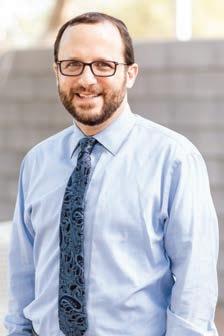
As a Jewish intuition, Hebrew Union College is taking to heart the call to be or l’goyim, a light to the nations. The school that trains Jewish leaders worldwide is holding itself accountable to the highest moral standard. We are, today, in the middle of the story. And the only way we come to the end is with a willingness to do better, to do t’shuvah, to change.
In 2016, the college adjusted the ordination certificates, and gave female ordinees the option to choose language that is constant with the language that has appeared on men’s certificates since the founding of the school. But my smicha still hangs on my wall, as is.
If given the option, would I change it? Would I mail it back for a fresh copy?
him create a menorah and some candles. However, eventually the prison guards confiscated his menorah and candles, and he was forbidden to celebrate the holiday further on the theory that a prison is not a synagogue. Sharansky promptly went on a hunger strike. He told the audience that he wouldn’t have done so if he had not already started celebrating the holiday, but once you exercise a freedom you cannot give it back.
Fortunately, the prison officials were expecting the visit of state inspectors from Moscow and did not want Sharansky to be on a hunger strike when the visitors arrived. So, the head of the prison asked him what it would take to get him to stop. Sharansky said he would eat only if he were allowed to celebrate the one remaining night of Chanukah. Sharansky also insisted that he be permitted to do it in the chief’s office (a much warmer place than Sharansky’s freezing quarters), that the chief bow his head while Sharansky prayed and that he say “amen” with Sharansky at the end. The chief asked how long this would take. Sharansky assured him it would not take long. The chief agreed and the menorah appeared. Sharansky then said a lengthy prayer, part of which he made up, and which he repeated to keep the service going as long as possible. Since
Several professors signed my smicha certificate. Some of them are the mentors and teachers whose Torah I carry in my heart each day. Some of them suffered their own story of abuse at the college. Some of them are the pioneers who showed us the water was cloudy when we were in too deep to see. And at least one of them is an abuser, a man whose transgressions are now, finally, exposed by the light.
A fresh smicha with different wording wouldn’t tell this story. It wouldn’t serve as a reminder of both how far we have come, and how far we still have to go.
We are hurtling forward, writing new chapters every day. We grasp that quill and write a chapter for the women who are insulted for reading Torah at the kotel, and a chapter for the women who are passed over for deserved promotions. We dip into the ink again and include a chapter for the non-conforming individuals who show us how wide the Jewish umbrella should be, and a chapter for the ways that we fold in the folks on the margins. We scribe a chapter for the times we wipe each other’s tears. A chapter for Dina. A chapter for her pain. A chapter for ours.
The middle of the story is long. But as we bravely turn each difficult page we come ever closer to the book we want to read, the waters we want to swim in. As or l’goyim we shine a light on our darkest stories. And in the clearest water, the brightest time of day, we come closer to saying, finally, “The End.” JN
Rabbi Sara Mason-Barkin is one of two rabbis at Congregation Beth Israel, where she first delivered these words in a sermon. This is an edited version.
he was praying in Hebrew, the prison chief didn’t realize that Sharansky was repeating himself. Soon wax from the candles was dripping onto the chief’s beautiful desk.
At the end, Sharansky prayed that he would soon be able to celebrate Chanukah with his family in Jerusalem and added, “May the day come when all our enemies, who today plan our destruction, will stand before us and hear our prayers and say ‘amen.’” On cue, the chief, relieved that the service had finally ended, echoed “Amen.”
As we celebrate the end of Chanukah, may we take with us a story, a story of the Maccabees, or the story of Natan Sharansky, or your own personal Chanukah story, offered as hope that its light will stay with us long past the holiday season. JN
RUSSAK-HOFFMAN
CONTINUED FROM PAGE 11
of judgmental cracks accusing Izzy of being brainwashed, and those were the ones that bothered him the most. Because while he’s used to hatred against Jews, he can’t understand why anyone would think it’s wrong for a Jewish kid to be brought up keeping Jewish practices. “I’m not indoctrinated. I’m Jewish,” he said with frustration.
I’m kvelling with pride. But I’m also angry. Izzy doesn’t feel unsafe or shaken in his Jewish identity. He knows his parents have his back, that we keep him physically safe and protected. And he isn’t surprised that there is antisemitism, not even at 14.
And that is why I am angry: As a mother and as a Jew, I am angry that Izzy was not surprised. I am angry that TikTok allows antisemitism to thrive in videos and comments, and rarely takes down reported videos — with notable exceptions being videos created by Jews that were bombarded with false reporting from antisemites.
I am angry that I have to help my children develop their coping mechanisms. I am angry that even though we managed to report and successfully remove a couple of the most vile comments, more have replaced them.
And yet I cling to a tiny glimmer of hope, thanks to the non-Jews in the replies defending Jews and defending Izzy. And to Bear Jews everywhere, laying tefillin every morning and refusing to cower. JN
12 DECEMBER 3, 2021 JEWISH NEWS JEWISHAZ.COM RELIGIOUS LIFE TORAH STUDY
Rabbi Jeremy Schneider is the spiritual leader of Temple Kol Ami in Scottsdale, and vice president of the Board of Rabbis of Greater Phoenix.
SHABBAT CANDLE LIGHTING DEC. 3 - 5:02 P.M. DEC. 10 - 5:03 P.M. SHABBAT ENDS DEC. 4 - 6:00 P.M. DEC. 11 - 6:01 P.M.
Find area congregations at jewishaz.com, where you can also find our 2022 Community Directory.
PARSHAH MIKEITZ GENESIS 41:1-44:17
RABBI JEREMY SCHNEIDER
MASON-BARKIN
Jessica Russak-Hoffman is a Seattle-based author represented by Emerald City Literary Agency.
SENIOR Lifestyle





JEWISHAZ.COM JEWISH NEWS DECEMBER 3, 2021 B1
ISTOCK / GETTY IMAGES PLUS / DRAZEN ZIGIC
A legacy of
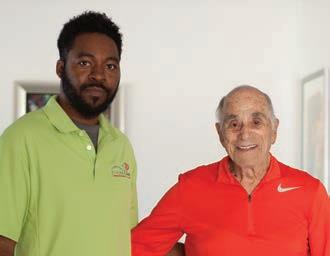
Seeing the “I” in isolation

 RABBI MINDIE SNYDER
RABBI MINDIE SNYDER

Amulti-sensory banquet awaits those who dare to take this earth walk, irrespective of one’s ability or station in life. Whether we encounter a fragrant, noxious or a bland path could depend upon the fellow who accompanies us, the fellow we accompany or how well we partner ourselves.
“It is a couples’ world.” This is the popular understanding among residents in today’s senior living campuses. However, emerging statistics prove otherwise. Recent Pew studies and others have revealed that over a third of older adults in the United States live alone. That amounts to nearly 15 million people. In contrast to the U.S. numbers, 16% of older adults are living alone in 130 countries where multi-generational households are more common.
Looking back to 1900, the amount of people who lived alone over the age of 65 was only 6%. Improved life expectancy and economic security have driven up the numbers. According to Harvard’s Joint Center for Housing Studies, 42% of the aging nation’s population over 65 lives alone and there will be many more in the coming years. Furthermore, 69% of those living alone are women. The statistics for aging single men have also risen. For instance, the number of men living alone between 1970 and 2012 doubled. That’s a lot of uncoupled people traveling solo at the horizon of life.
The tacit acceptance of this “couples’ world” idea can place those who are not part of a pair at a marked disadvantage in social situations. As a result, a bifurcated environment of exclusion is established, amplifying feelings of isolation which may already exist for single people.
While gathering the recent data, reviewing the social perceptions and experiences of aging singles, the ripple effects of isolation became apparent. In addition, the COVID-19 pandemic has inflamed the “I” in isolation to such an extent that other “I” words and concepts seem to radiate from it. Therefore, I thought it would be beneficial to explore this phenomenon of “I’s” in reference to aging singles.
Over the past two years, some primary relationships have fared better than others. Internal misalignments, along with the stresses caused by the pandemic, have maxed out previously stable reserves. This secondary pandemic of relational conflict has contributed to the severing of couples’ ties and the proliferation of new singles.
Additionally, the death of a life partner
because of COVID, or other health events, has often resulted in undesirable and life-altering situations. People who are suddenly single are doing things they never needed to do before. They are learning new things and acquiring new skills, all frequently under the weight of grief.

Alone happens and it continues due to chronic illness, death, separation, divorce, lack of opportunities or personal choice.

The Hebrew word for alone is badad We see this word in several places, initially in proximity to lo tov, not good. Genesis 2:18 introduces us to God saying that it is not good for a person to be alone. Later, Yitro tells Moses that it is not good for him to lead (the people) alone. (Ex.18:17)
Rabbi Harold Kushner has shared a meaningful teaching that Jews don’t pray for, Jews pray with, illustrating the importance of interpersonal and communal bonds. “I”, in this case, stands for interdependence.


In addition to attachments with others, Jewish tradition encourages everyone to be true to themselves. The “I” in independence can reflect a person’s desire and ability to self-actualize. This, too, is important. We are stronger and healthier when we do not allow others to define us and when we align with our life’s purpose(s). Rabbi Lord Jonathan Sacks z”l explained that a person should be prepared to stand alone, to be courageous, to demonstrate moral strength, as needed. For those who are single, embracing this period of independence can be empowering.
Pirkei Avot 1:14 presents the famous quote from Hillel that links independence to interdependence. “If I am not for myself, who will be for me? If I am only for myself, who am I? If not now, when?” Indeed, unique conditions of the pandemic have illuminated multiple “I’s” for our consideration, directed at both self and others, in the present tense.
However, proper scrutiny needs to address the “I” in indifference. This “I” can manifest exclusion. During pastoral counseling sessions, I have witnessed the emotional pain caused by forms of rejection. Singles have described their well-meaning attempts to join gatherings where couples dominate. Some instances involved people they have known for a long time, while others corresponded to more recent acquaintances. They reported dashed hopes and hurt feelings when they were rebuffed simply because they were not part of a couple. The message they received was, “You don’t belong here (anymore).” Such encounters can be startling and harmful for the single person
SPECIAL SECTION
SENIOR LIFESTYLE B2 DECEMBER 3, 2021 JEWISH NEWS JEWISHAZ.COM (602) 530-6900 hov.org
caring Accredited Jewish Hospice Hospice, supportive and dementia care Shabbat blessings and kosher meals Music, pet therapy and Veteran tributes Grief support Volunteer opportunities Call 24/7 to speak with a nurse As a not-for-pro t, we never turn anyone away Free In-Home Assessments | 602.708.8626 www.connectionsinhomecare.com 3509 E. Shea Blvd Suite 108, Phoenix, AZ 85028 CONNECTIONS IN HOME CARE CONNECTIONS IN COMMUNITIES We guide families through their care journey helping them determine what’s best—Community care or Homecare. Connections In Home Care specializes in reliable companion care, personal care, and dementia care in the comfort of home. www.connectionsinhomecare.com 3509 E Shea Blvd Suite 108, Phoenix, AZ 85028 Connecting Hearts to Homes Care avatlable.fromfour to twentyfour hours a day Local]ewishfamt(y operated • Home Care Association of America Connecting Hearts to Homes Care avatlable.fromfour to twentyfour hours a day �NECTto 00lvJ' IN HOME CARE Connecting Homes Local]ewishfamt(y owned & operated • Home Care Free In-Home Assesments 602.708.8626 www.connectionsinhomecare.com 3509 E Shea Blvd Suite 108, Phoenix, AZ 85028
seeking to belong or genuinely trying to maintain long-standing friendships.
John Cacioppo is a University of Chicago professor who studies the health risks of loneliness. He has observed that loneliness affects 40% of older adults. The health risks associated with loneliness are significant, demonstrably worse than air pollution or obesity. Loneliness generates stress and can increase blood pressure, as well as unhealthy habits, such as smoking, drinking alcoholic beverages, neglecting physical activity and medical care. Risks for cognitive decline also increase. For example, studies have shown that the frequency of Alzheimer’s disease doubles in lonely adults.
Regardless of the cause, lifestyle changes can be even more challenging for those over 65 with additional vulnerabilities. LBGTQ+ community members, ages 65-79, were studied for a 2011 collaborative report published by the LBGT Aging Center. Researchers found that 53% identified feelings of loneliness and isolation. 59% of the participants expressed that they lacked companionship.
A groundbreaking article last year by Eric Emerson, Ph.D., Nicola Fortune, Ph.D. and Roger Stancliffe, Ph.D., noted that people with disabilities experienced perceived low social support and social isolation at notably higher rates than
those without disabilities. Consider that 46% of people 60 and above have disabilities of some kind. Combine that with the complications of a pandemic and the trend of older adults living alone. We need to be simultaneously concerned and resourceful.
At Sun Health Communities, we are responding to the needs of diverse populations by establishing programs, providing supports and resources. Progress was made at a recent workshop that I facilitated for singles when we identified several consequential topics requiring action. We learned that the group’s paramount concerns matched
the latest research: mitigating isolation and loneliness, followed by a need for inclusion. Participants were energized by the prospects of identifying common problems and creating viable solutions. Here, the “I” in inspiration is leading to the “I” of innovations.
Yet, alone happens. It happens all the time. Not only throughout the pandemic, but during holidays and all kinds of anniversaries, when it can be especially difficult to be separated from others.
News flash: this is not a “couples’ world.”
This is not a “singles’ world.” This is the world that The Holy One of Blessing created for all of us. We are tasked not
only to care for the widow, the orphan and the stranger (Lev 19:34, 25:35), but for those who are alone for all sorts of reasons, those who feel lonely and those who are unable to express what they need to improve their situation.
Where does the “I” in COVID go? Often, it migrates into the isolation of singles. This expanding demographic of people over the age of 65 features many who find themselves alone and on the fringes of activities. They deserve to be seen, heard, valued and included. Yes. Alone happens. However, the “I” in isolation has already occurred too many times. Seeing the “I” in isolation means paying attention to the needs of our fellow, as well as our own needs and taking decisive action to assure that no branch of the human tree is cut off from the nourishing trunk of community.
Kol Yisrael araveim zeh la-zeh. All Jews are responsible for one another. (and all of God’s Creation).
A banquet of connections awaits our discovery, so let’s put the “I” into inspiration and inclusion, exercising the revitalization of a most important mitzvah. Then let’s see how wonderful this new year can be. JN
Vibrant & Engaging Retirement Living at Maravilla Scottsdale

If there is anything this past year has shown us, it is that choosing the right retirement community is about more than just deciding on a favorite floorplan or location. Now more than ever, connection, engagement, and the opportunity to pursue a vibrant lifestyle matter. Discover Maravilla Scottsdale, o ering a sophisticated blend of hospitality, fine dining options, social opportunities and a refreshing array of wellness and recreational o erings – all delivered by a committed team of professionals who are dedicated to residents’ health and well-being.
It’s something we call it the Power of WE. It’s the power that comes from the collective “WE” that Maravilla represents: a family of amazing sta , and most importantly residents and their families, drawing profound power from togetherness.
Maravilla’s ZEST® health and wellness team provides ample enrichment opportunities that touch the mind, body, and soul. With support and safeguards in place, residents enjoy a full calendar of vibrant programs. Through the community’s gourmet dining experience, residents are sure to enjoy the monthly “Let’s Dish” events highlighting fresh and seasonal choices on the ever evolving and expansive menu with cooking demonstrations led by the community’s executive chef.
Further enhancing residents’ vibrant lifestyle is a continuum of care, accredited by the Commission on Accreditation of Rehabilitative Facilities (CARF), the leading independent organization accrediting senior services. Maravilla Scottsdale delivers personal and supportive care in a beautifully crafted setting. Licensed assisted living takes a “whole-person” approach to wellness, with a full menu of supportive services that can be tailored to meet residents’ needs, now and in the future. Should the need arise, Maravilla’s Enliven™ memory care program o ers a person-centered approach with individualized care and the integration and support of family members.
To learn more about the vibrant lifestyle o ered at Maravilla Scottsdale, join us for an informational presentation on Tuesday, December 28th at 11:30 am. Please call 480.269.1952 to RSVP for this event or visit www.MaravillaScottsdale.com to schedule a personal tour.
SPECIAL SECTION
JEWISHAZ.COM JEWISH NEWS DECEMBER 3, 2021 B3
Rabbi Mindie Snyder serves as the rabbi and chaplain for Sun Health Communities. This is the first of two essays by Rabbi Snyder on this topic.
WE ARE TASKED NOT ONLY TO CARE FOR THE WIDOW, THE ORPHAN AND THE STRANGER, BUT FOR THOSE WHO ARE ALONE FOR ALL SORTS OF REASONS, THOSE WHO FEEL LONELY AND THOSE WHO ARE UNABLE TO EXPRESS WHAT THEY NEED TO IMPROVE THEIR SITUATION.
Forgiveness
BOB ROTH
“Iam sorry.” These three words are perhaps the hardest to say.
As many of us go through life, we count our blessings. What a privilege, we think. At the same time, we can’t help but reflect on the losses that we have endured along the way. Losses can include loved ones and friends who have passed on, health challenges that prevent us from doing things that we love or the loss of a job and income. Nothing has highlighted all of these things and more than the pandemic we have endured for nearly two years now.
I want to dedicate this month’s column to lost relationships, specifically relationships that were fractured and lost along the way. Some of these losses are from so many years ago that we have a hard time remembering exactly what happened to cause the disconnect.
As we approach the end of 2021, and in the spirit of the secular new year, there's a sense of renewal, of hope, goals, spirit and inspiration. Wouldn’t it be great to
RETIREMENT
include repairing some of these past relationships? While some are well beyond repair, others might be as simple as a misunderstanding or something that may have seemed important at the time and now seems trivial.
Forgiveness is not dependent on the actions of others, so why would one want to ask for it? When someone expresses remorse for something, they are typically seeking reparation or restitution. But it can also be a form of self-help.
Forgiveness takes practice, honesty, open-mindedness and a willingness to try. It is not easy.
One day over lunch, a good friend of mine shared with me that he wanted to make amends with people he had lost touch with over the years. Several months later, he reported back to me on how these calls and personal visits went. He told me catching up with some of his old friends was cathartic, and at the same time also rejuvenating. He recalled one conversation with an old high school friend that led us both to tears. Four years later, my friend passed away. The fact that he took
Just the way you want
With modern, maintenance-free villas and apartment homes that feel like a luxury resort, plus a dog park, sports bar and two new restaurants right at your fingertips, Inspirata Pointe has everything to help you live your perfect retirement. And, we’re building it now! Inspirata Pointe, the newest neighborhood coming to Royal Oaks.
IF
Reserve your perfect retirement today. Call 623-432-9574 or visit www.inspiratapointe.com.
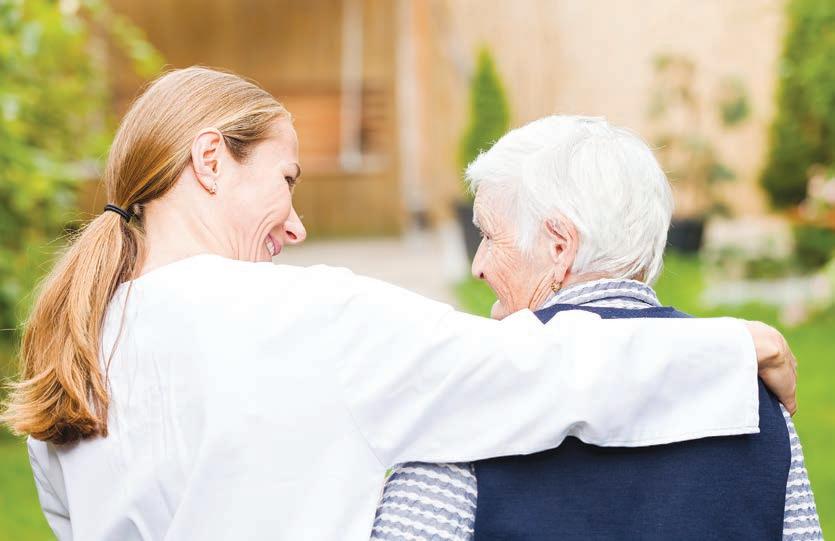
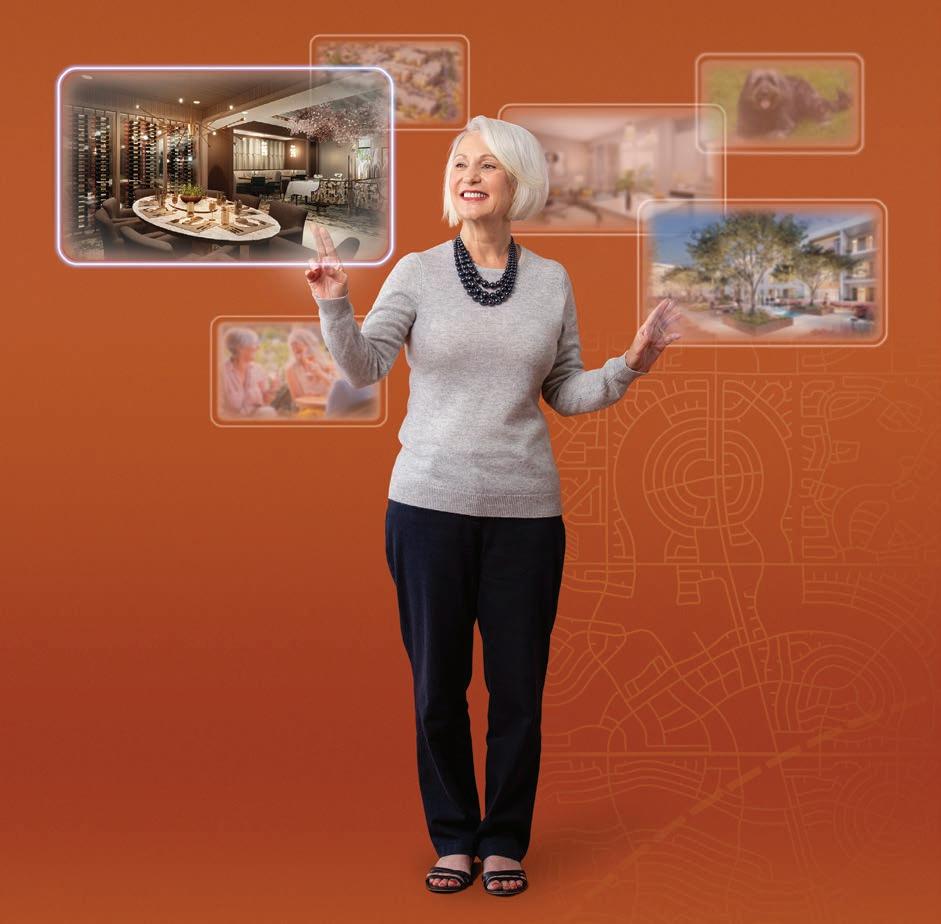
the time to ask for forgiveness and tried to mend broken relationships epitomizes the idea of dying in peace, which is a blessing.
As parents of daughters, Susie, my wife, and I learned to turn their wrongdoings into teaching moments. There would most definitely be repercussions for their actions, but mostly we learned to forgive them and always tried to bring back some normalcy to our family afterward. As parents, we wanted to be able to forgive them and move on because we saw the good in our kids. I am happy to say that Susie and I were fortunate to raise three amazing daughters.
At the end of the day, we all make mistakes, and we all need forgiveness. There is no magic wand we can wave to go back
we can do everything in our power to try to make things right.
We should all follow my friend’s example and make amends with some of those friendships that we lost over the years.
I couldn’t help but think of Don Henley’s song “Forgiveness.” Some of the lyrics say it so well: “I’ve been trying to get down to the heart of the matter, but everything changes and my friends seem to scatter.
“But I think it’s about forgiveness, even if, even if you don’t love me anymore.” JN
Bob Roth is the managing partner of Cypress HomeCare Solutions.

SPECIAL SECTION
SENIOR LIFESTYLE B4 DECEMBER 3, 2021 JEWISH NEWS JEWISHAZ.COM
YOU COULD CREATE YOUR PERFECT RETIREMENT, WHAT WOULD IT LOOK LIKE?
it.
ISTOCK / GETTY IMAGES PLUS / OBENCEM

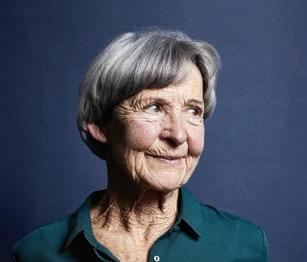


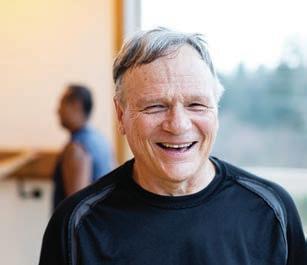




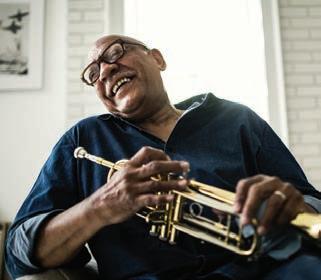
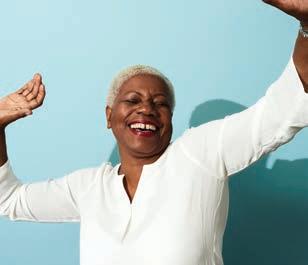




JEWISHAZ.COM JEWISH NEWS DECEMBER 3, 2021 B5 the power of we Feel the holiday spirit at our outdoor Winter Wonderland Festival! Join us for delicious bites, local vendors, fun games and festive holiday music. To RSVP, please call 480.269.1952. WinterWonderland | WED., DECEMBER 15TH • 2:30-4:00PM TOGETHER WE THRIVE. Connection is key to a longer and more vibrant life, and powers everything WE do at Maravilla. It’s like being part of a super supportive family of waiters, chefs, housekeepers, ZEST® activity coaches, care & wellness teams, and even a bunch of really friendly and fun neighbors, all helping you thrive. Experience the Power of WE at Maravilla Scottsdale senior living community. 7325 E. Princess Boulevard, Scottsdale, AZ | MaravillaScottsdale.com | 480.269.1952 CARF ACCREDITED | CASITAS | COURTYARD RESIDENCES INDEPENDENT & ASSISTED LIVING | MEMORY CARE AN SRG SENIOR LIVING COMMUNITY EQUAL HOUSING OPPORTUNITY
Q&A: Dr. Robert Ziltzer found his passion with weight loss specialty after decades in primary care
SHANNON LEVITT | MANAGING EDITOR
Dr. Robert Ziltzer, 58, could have spent his entire medical career running his successful primary care practice in Scottsdale. It was his plan when he went to medical school in New York, where he was also born and bar mitzvahed. He even stayed in school an extra year in order to become board certified in both adult and child medicine — no easy feat.
He completed his residency in Arizona, joined a local practice and climbed aboard the proverbial treadmill of being a primary care physician for the next two decades. And he loved it for a long time. He was doing what he had always wanted — developing strong relationships with his patients, entire families of them. With his “med-peds” license, he treated parents and their kids, who he then watched grow into adults with kids of their own.
But there were a couple of big drawbacks. For one thing, his success was overwhelming. “It felt like drinking from a fire hose, I was so busy,” he said. “If I wanted to work 24 hours a day, there would be enough patients to see.”
The other hiccup was more existential. While “kids get better in most cases, almost no matter what you do,” he said, “adults often get sicker as they get older and your job is to slow the aging process.” He hadn’t banked on a life handing out pills, just watching his adult patients worsen. He had become a doctor to help people, but if he couldn’t help the whole person, he wondered, what was it all for?
In 2006, he took a leap of faith. Along with Dr. Craig Primack, one of the Jewish partners in his practice, he plunged into a new specialty. He believed that if he could focus almost exclusively on weight management, he could make the kind of improvements for his patients that would deliver a real impact on their health.
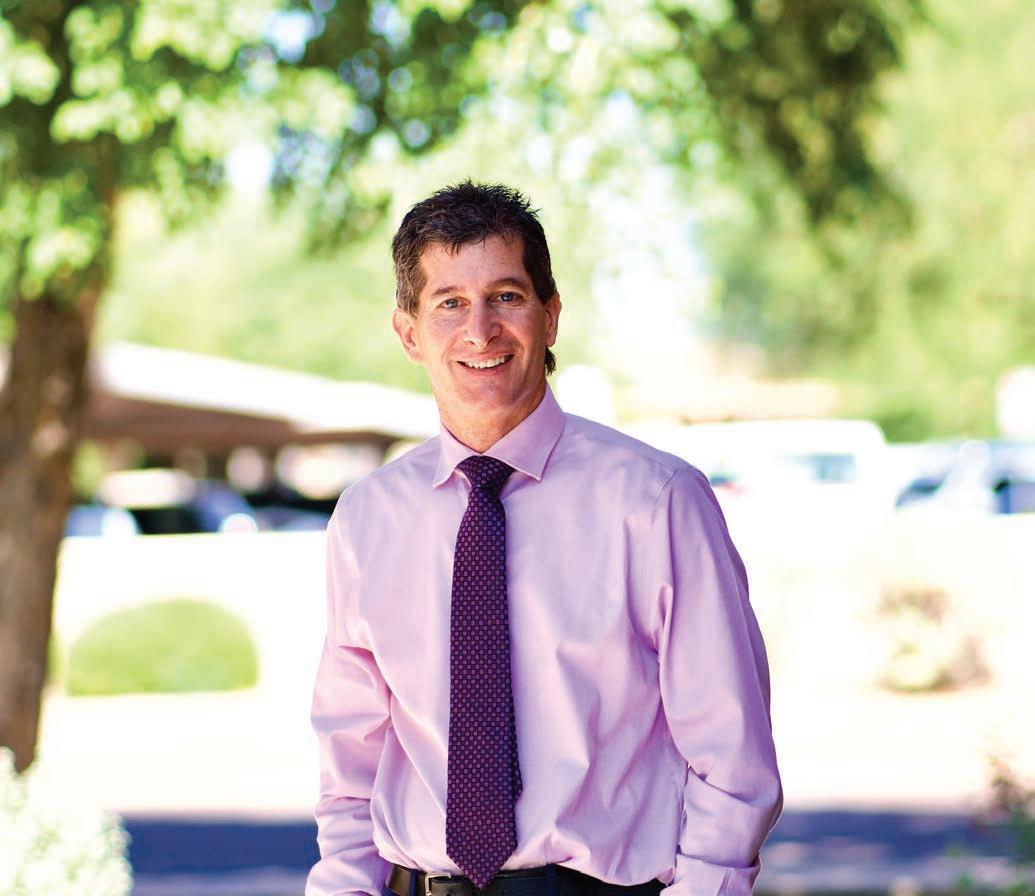
Ziltzer talked to Jewish News about why he became a doctor, his decision to change things up and the gratification of pursuing one’s passion.
Why did you want to be a doctor?
As long as I can remember, I’ve wanted to be a physician. It was just something in me. And my parents tell me that as young as age five I wanted to be a doctor. Who knows, right? But it was just something within me that I wanted to care for people; I wanted to be able to heal. And that’s really what makes healing — through touching, through therapy, through surgery, through counseling — helping people feel better, helping people get better.
I had no other doctors in my family, but Jewish culture focuses on the family unit, and we had a strong family unit. And focus is on community and being part of a larger
community and doing good, and those are all the values that are instilled in me. I don’t think that directly pushes someone into medicine, but I was raised with a strong emphasis on education. My parents are certainly proud that I went down this route, but they didn’t push me at all.
And why choose a specialty that took so much more time and effort?
I wanted to take care of adults and kids. The other way to go is family medicine, where you deliver babies and you set fractures and it’s very, very general. But pediatrics is fun because you get to take care of kids and play with kids. What was your practice like?
I was so busy and so overwhelmed that it was hard to manage it all because back then we didn’t have electronic medical records. In medicine, there’s a huge amount of administrative, non-patient care stuff: medications to refill and patients to call, patients to call back, patients to notify of lab work. At the end of the day, which was often at 6:30 or 7:00, I still had all that stuff to do, and I wasn’t getting home until way later. And it’s stressful to be as busy as you are, and yet, not really making a difference for people.
That must have been frustrating.
It wasn’t gratifying. From a medical standpoint, the relationship with patients was by far the most gratifying part of it, because I got to know them. I took care of families, and I have kept those relationships. I would see families grow up, I would see kids become adults, and they didn’t have to change doctors. That part of it was really cool.
But was I actually making a difference? I was refilling blood pressure medicines and treating diabetes and all these diseases for which, if people just lost weight, they wouldn’t have. What was the key impetus for changing direction?
In the mid ‘90s, I just had an inkling of what I wanted to do; I wanted to help people lose weight, because it was clear that the medical education system does not teach people about weight loss. We didn’t learn about it in residency and didn’t learn about it in medical school.
What we learn is about hospital nutrition: how to take care of people who are in the ICU, on a ventilator, so they get enough feedings, and how to take care of people who can’t eat and need intravenous nutrition.
Residency is really hospital-based. You learn how to take care of people in the hospital who are very, very sick. But we don’t learn how to use medical nutrition for diabetes or high blood pressure. We just tell people to eat less salt and exercise — eat less and move more.
And that clearly doesn’t work. So, I launched a small weight loss program in my regular practice. I was on my own at first, and I brought together a psychologist and a dietitian. Back then Fen-Pfen was with us, and I did prescribe it for some patients. It was very effective. Unfortunately, one of those fens, fenfluramine, causes heart valve problems and was taken off the market. It gave a bad name to weight loss drugs and weight loss in general. But as time has gone on, the drugs that have emerged, have gotten better, and they’re safer. Now, we’ve got all these great options.
How did it become your new specialty?
Dr. Primack and I started attending seminars on weight loss. I always said if I can help people lose 50 pounds or more and keep it off, I’m going to do that full-time. It’s just way more gratifying. In primary care, you spend your days putting people on pills and giving shots. And now I get to take people off of those pills and shots for diabetes and high blood pressure, and all these other diseases that are related to obesity.
In 2006, after learning these tools, the two of us enrolled our first patient. And we basically told our patients who were in our primary care practice, "The disease you have would get better if you just lost weight. Do you want our help with weight loss?"
We started with around 70 patients and built from our primary care practice. And we got so busy that we realized we can’t do both. It was just the two of us. We realized we could actually do this full-time. We sent letters out to our patients saying, we’re doing this full-time; this is really our passion. And we referred our adult patients to one practice and our pediatric patients to another practice. And I still treat many of them today; they still see me in weight loss.
I had a great relationship with my patients, but now I get to do something where I’m really making a difference in people’s lives. And that’s why I went into medicine in the first place.
Why is weight management not part of a regular primary care practice?
In the system we have you don’t have time to dedicate the intensive time that’s required to help people lose weight. It’s not like high blood pressure, where you’re taking other medicines, and you can get their blood pressure down, or insulin, where we can get your blood sugar down. Weight loss requires a comprehensive approach, kind of like cancer. When someone develops cancer, they don’t just go to a doctor, who puts them on a pill. You go to an oncologist, who’s
positivity movement?
I am 100 percent a fan of taking away criticism of someone’s body. And people are beautiful at any weight. I fully advocate for that. At the same time, I am an advocate for health. And I don’t think it’s necessarily healthy to accept walking around with high blood pressure. As a society, we need to accept that there are people who have struggles; they have a medical disease and they need compassion. And we provide a safe space. Losing weight is harder for some than for others. There’s an incredible amount of emotional support that goes into what we do. And everything we do is in the spirit of health, both physical and emotional health. People come to us blaming themselves, living in a society where there are so many expectations. People are relieved to find out, this is not my fault. We get them out of that hole — shame, blame — and we can help. I don’t tell patients what they should weigh. I let them set their goal. They come to me wanting to look better, feel better, be able to move more and reduce diseases.
I will do everything I can to help them achieve their goal, as long as that goal is healthy. Almost all of our patients lose a lot of weight; some lose more than they expected. What is important for people interested in weight management to know?
Diets can work, but the paradigm that a lot of people don’t understand is that obesity is a chronic disease that we can control but not cure. So, for example, if someone has high blood pressure, and you put them on a blood pressure pill that works, if you stop that medicine in three months, what’s going to happen to their blood pressure? It’s going to go right back up.
We take people who are used to dieting, one after the other — typically a dozen diets, and we help them lose weight quickly. And it’s way easier with us because we have tools,
SPECIAL SECTION
SENIOR LIFESTYLE B6 DECEMBER 3, 2021 JEWISH NEWS JEWISHAZ.COM
we have medications, we have special diets, and they lose weight very quickly. But we also explain to them, if you just stop, you will regain all of your weight. So we teach them. Exercise is a real key for keeping off the weight and weighing yourself every day in maintenance is really important. And some of our patients find that without the use of medications, they are more likely to regain weight. So these drugs are now, in many cases, chronic.
What is the newest drug you’re using?
Ozempic is the most effective weight loss medication today, and it’s one of a whole class of medications that’s been out over the past decade. The drug name is semaglutide, and it’s marketed as an anti-diabetic medication used for the treatment of type 2 diabetes and chronic weight management.
How does it work?
It’s the closest thing we have to gastric bypass surgery in a shot. There’s a hormone in your intestine that your body makes called GLP-1. Your intestines release this hormone and it circulates through the blood stream and when it hits the hypothalamus it tells you to stop eating. It’s one of the fullness hormones. It breaks down very quickly, so taking that chemical and injecting it wouldn’t be very effective. However, drug companies have modified the molecule so that it lasts a week in your blood. And as a result, it essentially is giving
you more of what your body naturally makes, and is more sustained. And it just kills appetite.
This is also one of the more expensive medications we have. Some insurances cover it.
What is fun about this work?
The funnest part of my job is taking people who could barely walk and helping them achieve something that they never could have imagined. People cannot imagine they might like to run a marathon or a 5k. And we help people achieve that.
I have a patient who is in her 70s, who dreamed of doing triathlons. We got her to start training for them after she lost some weight. She lost around 40 pounds. I have hundreds of patients who could not run before who now want to become runners, and I help make the path easy for them. Through inspiration and a little bit of knowledge, people are often surprised to see what they can do.
How do you practice your Judaism?
It’s really about tradition for me and our family. My wife is Chinese and we have two kids. We do celebrate the Jewish holidays, and it is absolutely part of our family culture — an essential part of our culture. Our kids have a beautiful mix of cultures, because the Jewish and Chinese cultures are very similar — love of family and love of food, and the importance of education. JN
"I took a bad fall. The service Alert1 provides is PRICELESS! I would highly recommend your company to everyone.

I feel confident that when I am alone, I am protected by people who care."

-- Rachel, Alert1 Member, 2021

• 1 in 4 seniors falls at least once a year




• Falls are the leading cause of injury for senior citizens
• In-Home, On-the-Go, and Fall Detection Medical Alert Systems start at just $19.95 per month!


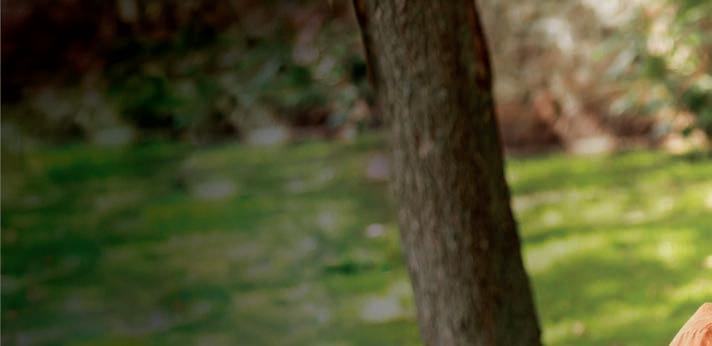

SPECIAL SECTION
JEWISHAZ.COM JEWISH NEWS DECEMBER 3, 2021 B7
Face an Emergency Alone.
Never
Medical Alert Systems Affordable Independence. Protection and Peace of Mind. Call 888-520-9113 today or visit Alert-1.com SPECIAL OFFER: 12 months for the price of 10! Call for details. Use promo code: JewishNews COLOR: Right click swatch, and find and replace with correct color Knowing you have a community of friends. INDEPENDENT LIVING • ASSISTED LIVING Call to schedule a tour (480) 660-6768 • AndaraSeniorLiving.com 11415 N. 114th St, Scottsdale, AZ 85259 Cadence Living® operates by state and local health guidelines. Life in the Key of Beautiful® at Andara HAPPINESS IS SCAN FOR MORE INFO


B8 DECEMBER 3, 2021 JEWISH NEWS JEWISHAZ.COM Enjoy Independent Living you'll trust. palazzohc.com 602.433.6300 6250 N 19th Ave, Phoenix, AZ 85015 Schedule a tour with a lifestyle specialist today! Also offering Assisted Living you'll trust. Top-line Memory Care and in-house Skilled Nursing Expertise. (HSAG Platinum Level) Year-Round Heated Pool All-Ages Playroom For Kids Private Event & Dining Rooms Fabulous, Indoor Resort Bar Temp-Controlled Wine Cellar Grand Movie Theater Premium Beauty Salon Fitness & Mobility Gym Center Endless Activities All Year Move in by Jan 31, 2022 and receive rent lock until 2024 Limited availability, so visit us soon! “Senior Living’s Best Kept Secret”
ASU celebrates Chanukah in style
MADELEINE STEPPEL
Arizona State University’s Jewish organizations are all celebrating Chanukah this year.
Olami (previously known as Jewish Arizonans on Campus), Chabad at ASU and Hillel at ASU are hosting their annual events, while the Jewish Cultural Coalition (JCC), a representative board of all the Jewish organizations on campus, is a newcomer to the festivities.
Olami at ASU hosted a combined Chanukah and graduation celebration on Dec. 1, for students and their families.
“We are super excited for our Chanukah party,” said Risa Brumer, the director of Olami at ASU and the University of Arizona in Tucson. “We have dinner, donuts, latkes, a game of dreidel and a white elephant gift exchange." She predicted a “cozy evening.”
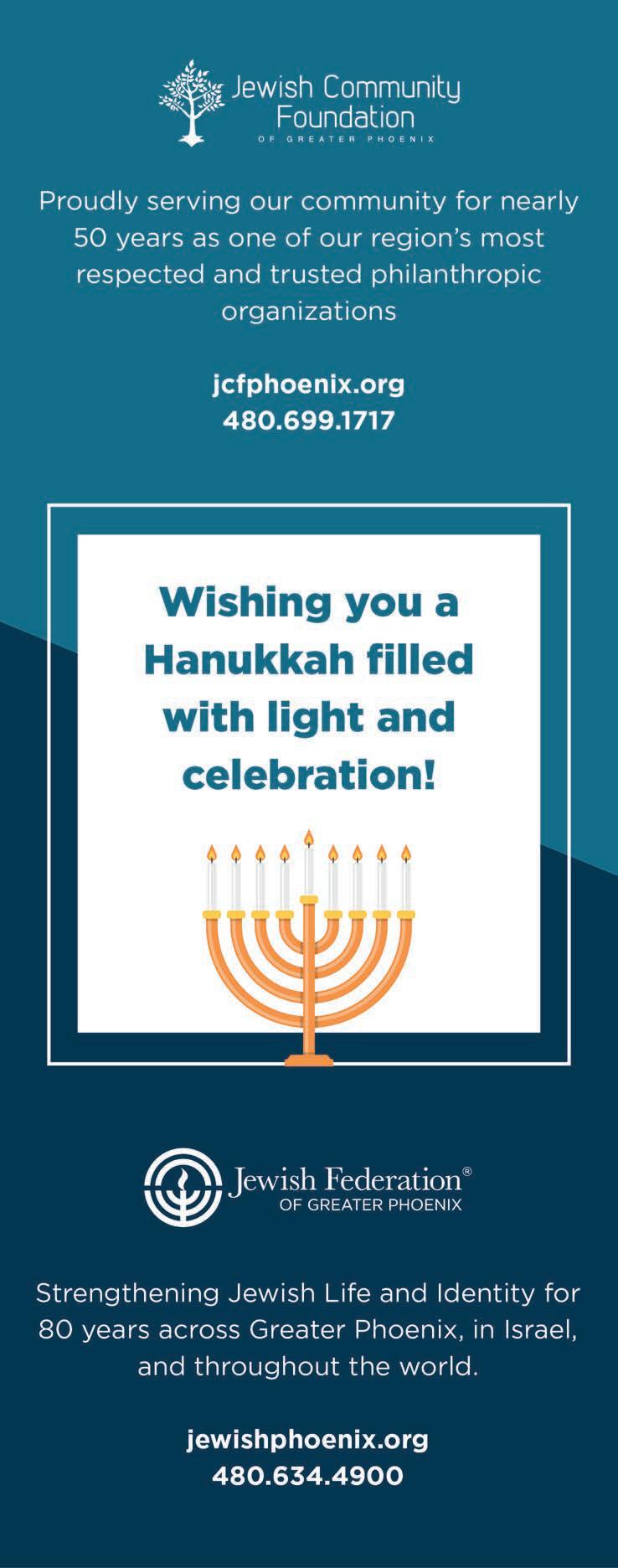
Each senior graduating in December “has a chance to speak and share the wisdom they’ve gained in their three-and-a-half years of campus,” she said.
Olami’s student president, Sammy Byrd, is one of those graduating seniors.
“In previous years I wasn’t able to be on campus for Chanukah due to COVID and celebrating with my family,” she said, adding, “I’m happy to be on campus for the holiday this year.”
Hillel at ASU is having its annual “Latkepalooza” on Dec. 3 at 5:45 p.m.
The Latkepalooza is in place of Hillel’s normal Shabbat celebration. All students are welcome to attend, and there will be “latkes, sufganiyot and a breakfast-for-dinner spread,” according to the event registration page. Prior registration and being fully vaccinated are required.
JCC is also hosting a campus-wide, public candle lighting in the evening on Dec. 5, at Hayden Lawn.
With the candle lighting, JCC plans “to provide a safe, and supportive space for students of all backgrounds to learn what
the miracle of Chanukah is all about,” said Gabby Glubochansky, a senior representative of the Coalition.
No prior registration is required.
Chabad at ASU hosted its “Chanukah Extravaganza” on Nov. 30.
“We’ve got an exciting party in store,” Chabad posted about the event on Instagram. The post hyped the night's “donut decorating, white elephant, dreidel, latkes, and dinner."
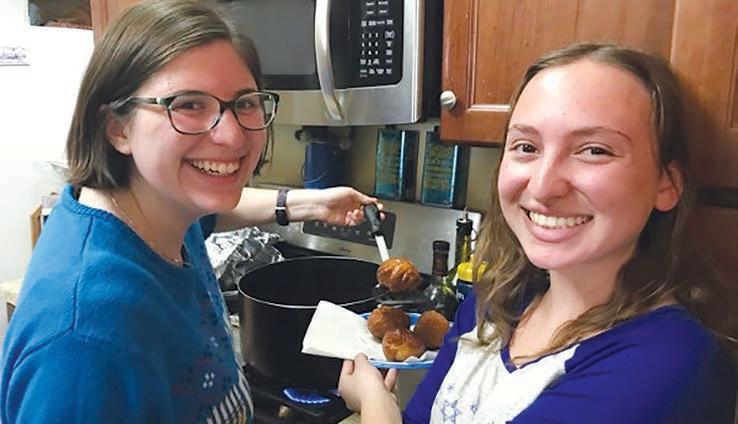
Chabad has also created a list of all the places on campus that students can light their menorahs.
Chanukah celebrates the miracle of a small group of Jewish warriors winning a war against the Greeks in the Second Century B.C.E. Then, despite only having enough oil for one day, it miraculously lasted eight.
Rabbi Yehuda Weiss is the program director at Olami Arizona, and he believes that everyone should celebrate Chanukah.
“The reason Chanukah is so important is because it was the first time in our history when we were given a choice, not between life and death, but between life with Judaism and life without Judaism,” he said. “Chanukah recalls our fight for our identity as Jews.” Thereafter, “the Jewish people were repeatedly asked to choose between their faith, and their lives.” He said that the Jewish community “draws strength from our collective memory of that first battle for our faith.”
Weiss believes that Chanukah is no less important to celebrate now than it was in the first years after the miracle.
“In our times, when we are not being asked to give up our religion, but are nevertheless giving it away through assimilation, we need to remember what we fought for, and why,” Weiss said. JN
SPECIAL SECTION
Madeleine Steppel is a sophomore studying journalism and religious studies at Arizona State University.
JEWISHAZ.COM JEWISH NEWS DECEMBER 3, 2021 13
CHANUKAH
Two students make donuts at Olami (then JAC) at the University of Arizona in Tucson, Dec. 2019.
COURTESY OF RISA BRUMER
The many lives of a sufganiyah: Celebrating doughnut diversity for Chanukah

“Gefüllte krapfen” isn’t exactly a German phrase that whets one’s appetite.
In fact, the Hebrew “sufganiyot” rolls off the tongue much more smoothly. But each word conjures the same culinary meaning: enriched dough stuffed generously with filling and fried to goldenbrown perfection.
Around this time of year, whatever you call these fried confections, consuming them is a mitzvah, their hot oil bath representative of the oil that sustained the lit menorah for eight days, instead of one.
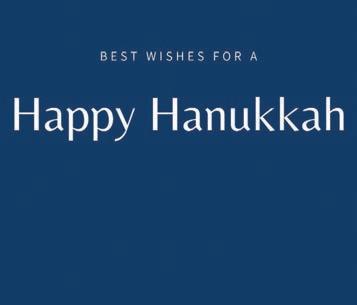
With an abundance of names for fried fritters comes an abundance of variations, each with its own history.

The ideal sufganiyot, according to Philadelphia-based food writer Aliza Green, is fried in fresh, clean oil, yielding a puffed, yeasted dough that is both light and airy but with a chew.
“It’s kind of contradictory, but that’s what makes it really delicious,” she said.
U.S. Jews are mostly purists when it comes to sufganiyot, Green said, preferring classic flavors year after year. She enjoys the fried bread’s richness cut with the acidity of strawberry or raspberry jam, as is traditionally found in U.S. bakeries through the month of Kislev.
Though a familiar confection in the U.S., jelly doughnuts emigrated — as many Jews did — from Germany and Poland, where a more savory and lean dough (sugar and milk were too expensive to use for an enriched dough), was stuffed with meat, fish, mushrooms or cheese, Gil Marks wrote in “The Encyclopedia of Jewish Food.” In Polish, they were called paczka or paczki; in Yiddish, they were ponchik or pontshke
Though Eastern and Central Europe may be the birthplace of what we recognize today as a jelly doughnut, fried dough enjoys popularity around the world and has deep roots in Sephardic traditions.

Evidence of this is in the popularity of sufganiyot in Israel — 45% of the population is Mizrahi or Sephardi according to Israel’s Central Bureau of Statistics — where variations of the filled doughnut are much more common than in the U.S. This is also due to the abundance of potatoes in the U.S. that inspire another Chanukah dish, taking the spotlight away from sufganiyot.
“We’re really more of a latke country than a sufganiyah country,” Green said.





Sufganiyot gained renown in Israel in the 1920s, when trade union Histadrut advocated for the production of the difficult-tomake sufganiyot over rudimentary latkes, to provide enough work for their laborers.
In Israel, sufganiyot are filled with milk caramel dulce de leche and chocolate or vanilla pastry cream. Halva and coconut flakes decorate the tops of the doughnuts, Green remembered, taking inspiration from across the region.
In Northern Africa, Moroccan Jews favor s’finj — a light, spongy ring of dough — on Chanukah; Tunisian Jews eat yo-yos, cakier fried rings soaked in orange blossom syrup and topped with crunchy pistachios bits.
Fritters are common in Jewish cuisine in Italy, too, with each pocket of the country having a variation on the doughnut.
In the Tuscan town of Pitigliano, known before World War II as “Little Jerusalem” because of its robust Jewish population, frittelle di Chanukah were a common diamond-shaped fritter, dough flecked with raisins, chopped figs or anise seeds, Green said.
Green also has a recipe for sebadas, Sardinian pastries stuffed with tangy cheese and drizzled with honey that she makes for Chanukah, shared below.
With its versatility and affordability, fried food is beloved across the world.
“If you think about it, is there any cuisine in the world that you can come up with that doesn’t have fried food?” Green said. However, doughnuts, regardless of the form they take, are never more celebrated than they are on the Festival of Lights.
Sufganiyot in the U.S. are most commonly filled with sweet raspberry or strawberry jelly and sprinkled with powdered sugar.
Sardinian sebadas
from “Starting with Ingredients: Baking” by Aliza Green
FOR THE FILLING:
8 ounces whole milk ricotta
2 ounces mild goat cheese
Grated zest of 1 lemon (1 tablespoon)
2 large eggs
2 tablespoons sugar
FOR THE DOUGH AND ASSEMBLY:
¼ pound (1 cup minus 1 tablespoon) unbleached all-purpose flour
2 ounces (½ cup minus ½ tablespoon) bread flour
¼ pound (½ cup plus 2½ tablespoons) fine semolina
½ teaspoon fine sea salt
½ cup warm milk
¼ pound (1 stick) unsalted butter, melted and cooled
3 cups canola oil, for frying
Powdered sugar
½ cup honey, warm
Make the filling: Combine the ricotta, goat cheese, lemon zest, eggs and sugar in a mixing bowl and blend well. Set aside.
Make the dough: In the bowl of a standing mixer fitted with the whisk attachment, combine the all-purpose flour, bread flour, semolina and salt. In a separate bowl, whisk together the milk and butter. Pour the mixture into the flour mixture, change to the paddle attachment and beat until a ball of dough forms. Beat 1 minute longer, or until the dough is smooth, wrap well and chill for 1 hour in the refrigerator or 30 minutes in the freezer.
Using a pasta machine dusted with flour or a rolling pin on a flour-dusted work surface, roll the dough out to less than ¼-inch thick. Cut 5-inch diameter circles from the pastry. Spoon about 2 tablespoons of the filling onto half of the dough rounds, leaving a ½-inch border around the filling. Brush the border with water and then cover with a second dough round. Press the edges of the dough rounds together firmly to seal.
In a wok, a large cast-iron frying pan or an electric deep-fryer, heat the oil to 365 degrees F, or until shimmering hot and the air about 3 inches above the oil feels hot. Place the pastries, one at a time, in the oil without crowding, and work in batches if necessary. Fry until light brown and crispy, about 4 minutes. Scoop from the oil, drain on a wire rack, and keep warm in a 200 degree F oven while you fry the remaining sebadas While the sebadas are still warm, sprinkle them with powdered sugar, drizzle them with honey and serve immediately. JN
Sasha Rogelberg is a staff writer for Jewish Exponent, a Jewish News-affiliated publication

SPECIAL SECTION
14 DECEMBER 3, 2021 JEWISH NEWS JEWISHAZ.COM NCJ AZ W® LEADING THE FIGHT FOR SOCIAL JUSTICE National Council of Jewish Women Arizona Real Estate | Business | Personal Injury | Litigation Bankruptcy | Estate Planning | Intellectual Property Happy Hanukkah Attorneys, Mediators & Counselors Our Business is Your Peace of Mind hymson goldstein pantiliat & lohr Arizona 14500 N. Northsight Blvd., Suite 101 Scottsdale, Arizona 85260 480-991-9077 New York 525 Chestnut Street, Suite 203 Cedarhurst, New York 11516 516-596-8366 www.scottsdale-lawyer.com
SASHA ROGELBERG | CONTRIBUTING WRITER CHANUKAH
COURTESY OF GETTY IMAGES
Padma Lakshmi heads to the Lower East Side for a Chanukah edition of Hulu’s ‘Taste the Nation’
JULIA GERGELY | JTA
Padma Lakshmi’s “Taste the Nation,” the acclaimed food docuseries, returned to Hulu recently — with schmaltz and pickles.
In a special, four-part holiday edition, Lakshmi highlights traditional holiday foods from locations around the U.S. — she visits Los Angeles to celebrate the Korean New Year, Miami to learn about Cuban Christmas and Cape Cod to learn about food traditions of the Wampanoag Nation, and to deconstruct the holiday
since 2010 — and New York’s Central Synagogue, where she discusses the history of Chanukah with Rabbi Ari Lorge.

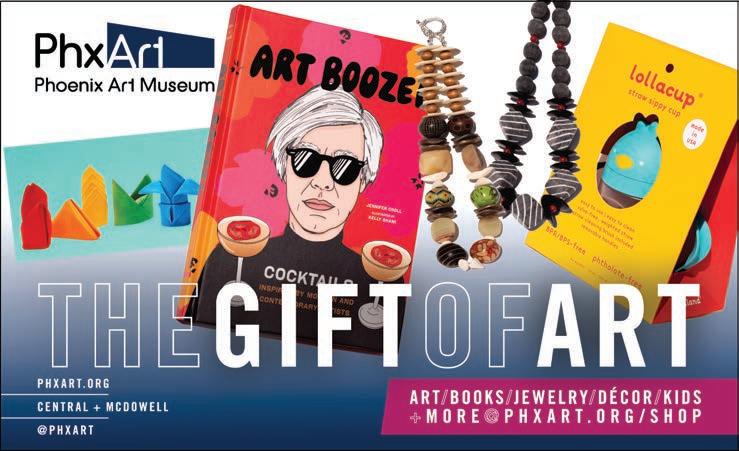
After speaking with Ruth Zimbler, a Holocaust survivor, she learns how to make holishkes (stuffed cabbage) with the creators of the artisanal gefilte-fish brand Gefilteria. She also brings her daughter Krishna along to share a brisket and kugel meal with Deb Perelman, the food blogger behind Smitten Kitchen.
The episode tells viewers the Yiddish name

narrative of Thanksgiving.
To learn about Chanukah? Lakshmi only needed to travel around the corner from her East Village apartment. In the episode, titled “Happy Challah Days,” she visits the Lower East Side, where hundreds of thousands of Jews lived after immigrating from Eastern Europe around the turn of the 20th century.
The episode is a New York Jewish food lover’s dream. Lakshmi — the author, model and food mogul who’s been nominated for 11 Emmys for her hosting/ judging work on Bravo’s “Top Chef” (her Jewish co-host Gail Simmons has been nominated for two) — makes her first stop at Russ and Daughters appetizing shop on Houston Street, a Lower East Side landmark since 1914. The shop is run by Josh Russ Tupper and Niki Russ Federman, great-grandchildren of the store’s original owner, Joel Russ.
At Russ and Daughters, Lakshmi learns to make latkes and samples many of the store’s signature Ashkenazi offerings: caviar, schmaltz, herring and liver. Lakshmi next visits the Tenement Museum, the Pickle Guys — an Essex Street mainstay
for each of the foods Lakshmi tastes, and celebrates the freedom Jewish communities have to practice their religion in America. Throughout, Lakshmi compares the Jewish immigrant and family experience with her own experience immigrating to the U.S. from India as a child.
Lakshmi also takes care to de-emphasize the role Chanukah has traditionally played in Jewish culture — she knows the holiday is not as religiously important as Rosh Hashanah, Yom Kippur, and even Passover. She tells her non-Jewish audience members that, contrary to popular gentile belief, the holiday is not “Jewish Christmas.”
Instead, Lakshmi uses Chanukah as a way to explore how Jewish-American culture came to be — its resilience, its community, its assimilation, its struggle, with food at the core of it all. She also explores her own relationship to the oil-drenched foods that play an important symbolic role during Chanukah.
“Personally,” she said, “I’ve never needed an excuse to eat anything fried.”

SPECIAL SECTION
JN
The “Taste the Nation” episode, “Happy Challah Days,” is streaming now on Hulu.
JEWISHAZ.COM JEWISH NEWS DECEMBER 3, 2021 15 We wish you and your family a bright and hopeful Hanukkah. Hava Tirosh-Samuelson Director Lisa Kaplan Assistant Director Dawn Beeson Coordinator Senior jewishstudies.asu.edu CHANUKAH evjcc.org WISHES YOU A WARM & WONDERFUL
CHANUKAH
Lakshmi lights a menorah on her visit to New York Central Synagogue during the “Happy Challah Days” episode of her Hulu show, “Taste the Nation.”
PHOTO BY CRAIG BLANKENHORN/HULU VIA JTA
ChaiFlicks: The Chanukah gift for when you don’t want to give pajamas





 ADAM REINHERZ | CONTRIBUTING WRITER
ADAM REINHERZ | CONTRIBUTING WRITER


Ihave a friend who only watches Jewish Broadcasting Service. Doesn’t matter the time. Doesn’t matter the program. He watches the JBS channel incessantly. If it’s midnight, he’s catching Rabbi Mark S. Golub on “L’Chayim.” On Fridays, he welcomes Shabbat with televised services from Central Synagogue in Manhattan. Although he has never admitted to enjoying a cup of coffee, a bagel and “Shalom Kids” in the morning, he probably does.










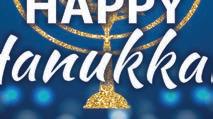






I’ve often wondered how someone could be so fixated on Jewish content. Sure, I’ve used various streaming services to watch “Fauda,” “Hunters,” “When Heroes Fly,” “Mossad 101,” “The Spy,” “Srugim,” “Black Space” and even “Hashoter Hatov.” But I’ve also consumed hours of programming that doesn’t appear when searching “Jewish,” “Hebrew” or “Israel” on Netflix, Amazon or other platforms. All of this is to say that when I was offered a free subscription to ChaiFlicks, a streaming curator of Jewish and Israeli content, I said OK, or, as the Israelis might, “lama lo.” Here’s where I’m at after multiple days in:



ChaiFlicks is great. I watched “Asylum City,” an intriguing series about refugees and crime in Tel Aviv; made my way through several shorts, including “Jewish Recipes with Oma & Bella”; and am laughing my kishkes off at “Checkout,” a comedy about an Israeli supermarket. As someone who scours online reviews with a deeply cynical eye — are there really more than 4,000 of us who bought, and actually love, phone cases that look like Game Boys? — I’m highly attuned to the questionable nature of online critiques. Yet, as unbiased a review as one can offer when given a free subscription, I will say that I’ve enjoyed watching ChaiFlicks. And I will attempt to answer a few questions you probably have:
Does ChaiFlicks have a seemingly endless catalogue like major streaming services? No. Does ChaiFlicks have a ton of stand-up, or sports-related programming? No (though “Heading Home The Tale of Team Israel” is there).

If you sign up for ChaiFlicks, which costs $5.99 a month or $60 a year, can you save a few shekels by dropping your subscription
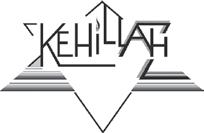




to Hulu, AppleTV+, Disney+, HBO Max, Paramount+ or Peacock Premium? Probably not. Well, maybe Paramount+, but that service does have “MTV Unplugged” and those were some amazing concerts.


Will watching ChaiFlicks, and its hours of Jewish and Israeli content, enable you to become a fluent Hebrew speaker? Tough to answer. I think it helped me, but then again, I also believe that hours of watching television while running on a treadmill has made me a polyglot and an expert in pop culture — a belief that was validly refuted after watching “Stuart Little” in German and telling others I just didn’t understand how the director could make a movie like that when the book was simply about Ralph S. Mouse and his adventures riding a mini motorcycle.
So here’s the thing: I like watching ChaiFlicks. Is it perfect? No, but as technology has often promised, it does bolster my connection to a distant place — in 1940, The New York Times reported that RCA put televisions in a Bermuda-bound ocean liner so traveling passengers from New York could still see the World’s Fair while away at sea. In that sense, does ChaiFlicks give me a better glimpse of life in Israel? In some ways, yes. Could it provide
greater understanding by having more content? Yes, but isn’t that what we’re all striving for — improvement?



What I know for sure is that with Chanukah now here, there's still time to give some presents. Perhaps you know someone who, after 20 months indoors, needs another pair of sweats —pajamas are always a nice gesture — otherwise, a subscription to ChaiFlicks is also a good gift for the homebound body, culturally curious consumer or someone seeking to spend winter’s cold days beneath a blanket and glued to their phone. I know I’m trying to figure out what gifts to get the people in my life. I just wish I had a friend who was absolutely obsessed with watching Jewish content.


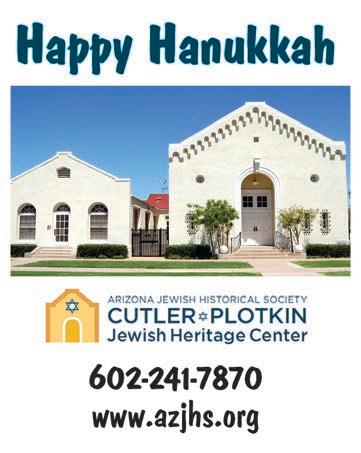
Adam Reinherz is a staff writer for Pittsburgh Jewish Chronicle, a Jewish News-affiliated publication.







JN
SPECIAL SECTION CHANUKAH 16 DECEMBER 3, 2021 JEWISH NEWS JEWISHAZ.COM www.smilesbyapdo.com JEWISH WAR VETERANS OF SCOTTSDALE POST 210 623-256-0658 Happy Chanukah from “ ere are two ways of spreading light: to be the candle or the mirror that re ects it.”
Edith Wharton Happy Hanukkah From the www.jcrcphoenix.org jcrcphoenix JCRC_Phoenix 5858 E Dynamite Blvd, Cave Creek 602-369-7667 • info@congregationkehillah.org www.congregationkehillah.org Youth Educati gram Youth gram Join us in January for our next semester! Happy Chanukah from Happy Chanukah “Building Skylines Since 1955”
–
Noa Koler, star of the Israeli comedy “Checkout” COURTESY OF CHAIFLICKS
Invest in happiness

 GAIL BAER
GAIL BAER
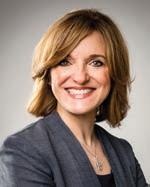
he Declaration of Independence ensures that we are all endowed with “certain unalienable rights, that among these are life, liberty and the pursuit of happiness.” The founding fathers affirm that it is our right to pursue happiness, but how we achieve that is up to us.
The pandemic forced a screeching halt to so many aspects of our lives. And as disruptive as that was, it also gave us the time and freedom to ask ourselves, “Am I truly happy?” This pause gave us permission to redefine what is important in our lives and offered us a chance to make a personal investment in our own happiness.
Scientific research and generations of history prove over and over again that a guaranteed way to personal happiness comes from making others happy. Whether you are volunteering at a food bank, buying holiday gifts for kids in foster care or making a financial contribution to a worthwhile cause that’s important to you, giving your time, talents and treasures (money) is a surefire way to achieve happiness. While it may seem counterintuitive that donating money rather than spending it on yourself could lead to happiness, the fact is that we gain perspective by stepping into another person’s world for a moment. In doing so, our own personal challenges and problems may not seem so overwhelming when compared to others’ circumstances.
Throughout the year, and most especially at the holidays, many worthy local, national and international charitable organizations send numerous requests for monetary support. While there are financially pragmatic reasons for charitable giving, the emotional and spiritual advantages far outweigh these short-term benefits, and in fact, can lead to a lifelong pursuit of happiness.








Giving makes you feel great. We all know how good it feels to receive gifts. But that sense of happiness can often be short-lived. However, giving a part of yourself to and for others creates
Tlong-lasting, lifetime feelings of higher purpose. Giving provides intrinsic value that is much higher than the amount of the gift itself. Experiencing this type of inner joy truly nourishes our souls, not to mention improving our long-term health and wellbeing.
Giving allows you to assess your personal priorities.
One of the best investments we can make in ourselves is to create a personal doctrine that aligns our own values to our charitable giving. Take time to ask yourself what your aspirational goals are for your community. Your personal investment in these priorities can bring these goals to life. Let your philanthropy and volunteerism mirror who you are. The power to improve the world is a privilege, but also comes with a sense of responsibility. This responsibility is an inspiring way to reinforce your own values and social conscience.
Giving encourages others to do the same.
Giving to charity and sharing your actions with others makes a powerful statement. Others watch what we do, especially our children. Young minds are naturally generous and helpful. Parents have a unique opportunity to engage their children early in supporting the greater community. Generosity creates longlasting gratitude and kindness. This positive impact allows us to be role models for others in our lives, spreading happiness with no expectations in return.
If you find yourself unhappy, down or just a bit off-kilter, try making someone else’s day and see how that changes your mindset. If you are feeling unfulfilled, try doing some meaningful work to see if you get a lift.
We can all realize the endless and priceless benefits of giving if we take the time to invest in our happiness. If you want to live happy, give happily. If you want to spread joy, give joyfully. And together we can fully experience the pursuit of happiness.

SPECIAL SECTION
CHARITABLE GIVING JEWISHAZ.COM JEWISH NEWS DECEMBER 3, 2021 17 jcctaxcredit.org Tax credits help provide meals and assistance for seniors in need. Make an IMPACT in the life of a person Donate up to $800. Get it back in tax credits.
Gail Baer is the vice president of philanthropic services for Jewish Family & Children’s Service.
our ISTOCK/GETTYIMAGESPLUS/DEZEIN
If you need us, we are here. If you can support us, we thank you.
Children’s Cancer Network supports children and families throughout their cancer journey with programs and services designed to provide financial assistance, promote education, encourage healthy lifestyles, and create an awareness of issues they face related to childhood cancer.
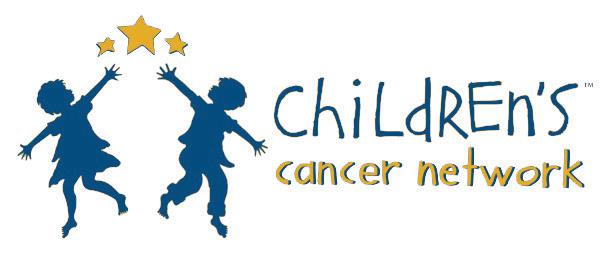
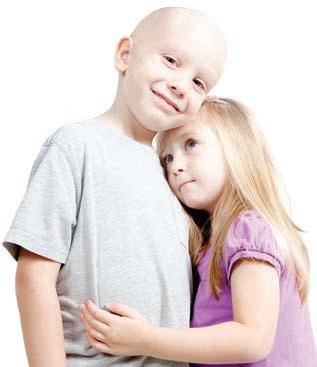
Serving over 800 families annually, Children’s Cancer Network strives to address the highest priority needs just when they are needed most. Our intention is for each family to realize they are not alone in their fight. Giving hope to Arizona’s children and families is our goal.

Make a di erence today by choosing Children’s Cancer Network for your charitable tax credit donation.

$400 for those that file as individuals and $800 for those who file jointly will be returned to you, dollar for dollar, on your Arizona State Taxes.
Questions? Contact Patti Luttrell at Patti.luttrell@childrenscancernetwork.org or 602-717-9139 | childrenscancernetwork.org

Donate today at childrenscancernetwork.org/donate
We benefit from the leadership of our community’s women
RABBI ELANA KANTER
As part of our alumni association leadership panel series, the Women’s Leadership Institute (WLI) recently sponsored an educational panel called the Founder’s Club. The panel was moderated by Jennifer Rogers of the WLI, and featured Becca Hornstein and Andi Minkoff, founders of two of our community’s premier service organizations: Gesher Disability Resources and the Minkoff Center for Jewish Genetics.
WLI mission, to increase the presence of women in leadership in general, but more specifically the presence of women in places where they can have greater input into Jewish
because it requires stepping into the unknown, and going to places no one has been before. At the same time, beginning something new is exhilarating because the new uncharted territory demands creativity, imagination and faith.
In hearing the stories from these agency founders one is reminded that it is only in retrospect that their willingness to take those steps can be appreciated. It is only in looking back that we can realize the courage it took to
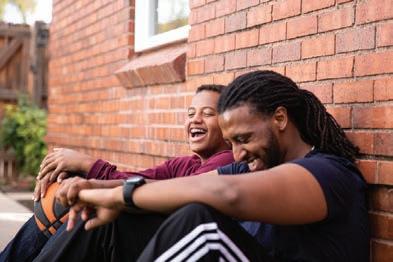
communal decision-making. It was natural that we would look to organizations the WLI partners with regularly, like Gesher and the Minkoff Center, when considering leadership models to educate our alumni. Through our mentees’ community projects, we have been privileged to partner with over 20 different Jewish agencies in the last five years.

The stories of how Gesher and the Minkoff Center started were eye-opening. In the case of Gesher, it was the vision and determination of one woman, Becca Hornstein, and later on, her allies, which launched the program and became a model for similar efforts around the country.
In the case of the Minkoff Center, it was the vision and determination of a husbandand-wife team, Andi Minkoff and her late husband, Dr. Sherman Minkoff, that launched this Greater Phoenix Jewish communal gem.
Each organization is also blessed to have current executive directors who are onewoman powerhouses in their own rights: Amy Hummell at Gesher and Wendy Carriere at the Minkoff Center. Each has taken the organization entrusted to her, and moved it forward in significant, dynamic and imaginative directions.

Beginning something new is challenging
I began my rabbinic training the year that the Conservative movement opened up the Jewish Theological Seminary’s rabbinical program to women. Like our predecessors in the Reform and Reconstructionist movements, I and my classmates hoped that the presence of women in Jewish spiritual leadership would bring strength to Jewish tradition and to the Jewish people. The participation of women would open up new, unforeseen areas of growth in Jewish life.
As these founders told us and as my own experience bears out, ultimately being able to start something new is a privilege of the highest order, one that can be a source of blessings to others, but that is most certainly a privilege and blessing for those who get to take those steps.
We are fortunate as a community to benefit from the efforts of these founders and those who have succeeded them. These are organizations of which our Greater Phoenix Jewish Community can be incredibly proud. JN
Rabbi Elana Kanter serves as director of the Women’s Leadership Institute and is corabbi of The New Shul. For more information about the Women’s Leadership Institute, go to womenlearning.org.
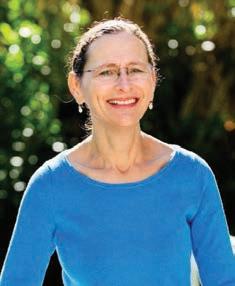
18 DECEMBER 3, 2021 JEWISH NEWS JEWISHAZ.COM SPECIAL SECTION
CHARITABLE GIVING
GiveTheGiftof Mentorship BBBSAZ.ORG/DONATE How to make your $800 Donation Cost You $0 And Help End Homelessness for Arizonans
is an example. Consult your financial advisor about your specific situation.
donate $800 to the Human Services Campus at www.hsc-az.org Your state taxes are reduced by up to an $800 tax credit Net cost to you
*This
You
$800 - $800 = $0
Participants at Women’s Leadership Institute’s Agency Night meet with agency representatives from Gesher and Minkoff and others, to explore working together on projects. This year, there were 14 agencies.
Local Sisterhood helps community
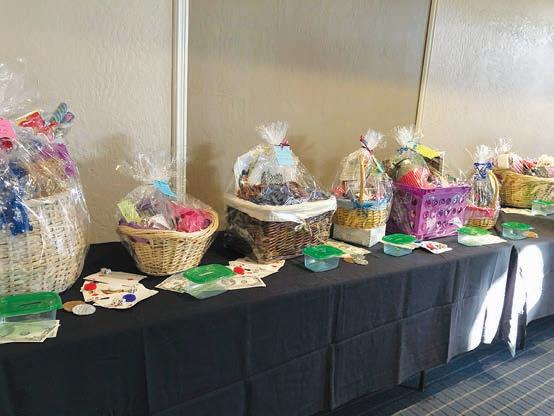 ESTHER SPEAR
ESTHER SPEAR
hen my husband and I retired to Arizona 12 years ago, we realized that we had time to volunteer in the Jewish community. Volunteering is a way to give back to the community, but it’s also a wonderful way to get to know one’s new neighbors.
Giving to others can also help protect your mental and physical health. It can reduce stress, combat depression, keep you mentally stimulated and provide a sense of purpose.
After we joined the Sun Lakes Jewish Congregation, we took the time to become active in several committees. I became a member of the Sisterhood Board of Directors and the Card Party committee, and my husband became president of the Men’s Club. Eventually, he would become vice president of the congregation. We easily made many friends and found the congregants to be very welcoming.
Sisterhoods — often referred to as women’s groups — are groups of active and engaged women who belong to a congregation and work together toward a common cause. They provide an array of leadership opportunities for women in various congregations.
WEach sisterhood across the country has different interests, but we are all dedicated to various religious, educational, social, philanthropic and advocacy efforts. Sisterhoods are an outlet for the vibrant energy, creativity and passion of Jewish women, a social hub and an integral part of any congregation.
The Sun Lakes’ Sisterhood has existed for more than 25 years. Our only fundraiser is the Annual Card Party, which will be held on Feb. 7, 2022. It is open to the public and draws about 200 women to the event. Next year’s event will be held at a new venue, the Cottonwood's clubhouse ballroom in Sun Lakes.
Tell your friends to bring groups to play mah-jongg, bridge, canasta, Scrabble and other table games. We will have huge gift baskets, gift certificates from local restaurants, as well as cash-prize raffles, a delicious catered lunch, and our famous bake sale.
Proceeds from the event will be distributed to local charities such as, but not limited to, the Chandler Unified School District’s program for homeless students, the Sun Lakes Fire Department, Stand Down, an organization for homeless female veterans, and Chandler CARE Center.
Another charitable Sisterhood activity is called
Toys from the Heart. Each year committee members purchase identical toys for every kindergartner in a local school and distributes them in December. For some of these children, these toys are the only gift they will receive for the holidays. How heart-warming it is to see the kids’ faces as they unwrap the gifts.
Their teachers also receive gift cards. Funds for Toys from the Heart come from donations and revenue raised at the Card Party.
We also like to bring interesting guest speakers to our meetings.
Our November guest speaker was Marcia Fine, an award-winning author who spoke about her wickedly funny book “Stressed in Scottsdale.” It is a comedy about a harried mother and wife trying to cope with everyday life. Fine skewers some of Scottsdale’s finest in the third book of her Jean Rubin series. She addresses the deeper issues of the environment and political corruption in laugh-out-loud lines. We encourage you to read the book and see if you recognize anyone.
Our next meeting is on Dec. 16 at 1 p.m., in the Chapel House. Our guest speaker will
be Cindy Rice, the first-ever female Army ranger. We will also have a representative from the Maternity Outreach for Moms program, a collaborative effort between the Phoenix Veterans Administration and Veterans First Ltd. The Moms Program assists pregnant female veterans in providing items for mothers and their newborn babies. We will have a baby shower basket for donations.
While it’s true that the more you volunteer, the more benefits you’ll experience, volunteering doesn’t have to involve a longterm commitment or take a huge amount of time out of your busy day.
The public is invited to attend our various Sisterhood events. If you would like to meet new friends while helping the community, I encourage you to call Carol at 480-895-3168 or Janey at 480-895-4815. JN
Esther Spear is a board member of the Sun Lakes Jewish Congregation’s Sisterhood.
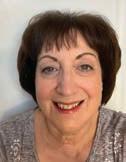
Over 250 Kivel Residents Still Rely on Us
Over 250 Kivel Residents Still Rely on Us
All donations to support:
All donations to support:
All Donations Are Greatly Appreciated
All donations received under this special Tax Credit Program will be used to underwrite essential services for the elderly who must rely on our Community’s collective generosity.
All donations received under this special Tax Credit Program will be used to underwrite essential services for the elderly who must rely on our Community’s collective generosity.
Donate on-line ive c e or complete and FAX to: (602) 957-949 , mail to: Kivel Campus of Care: Tax Credit, 3040 N. 36th St., Phoenix, AZ 85018 or Call (602) 314-4002 Please send me the A Tax Forms e v i e
Donate on-line ive c e or complete and FAX to: (602) 957-949 , mail to: Kivel Campus of Care: Tax Credit, 3040 N. 36th St., Phoenix, AZ 85018 or Call (602) 314-4002 Please send me the A Tax Forms e v i e
Name ________________________________________
Donate any amount up to $800 for couples filing jointly ($400 for individuals) by 4/15/2022 via check, credit card, or on-line at www kivelcare org
Donate any amount up to $800 for couples filing jointly ($400 for individuals) by 4/15/2022 via check, credit card, or on-line at www.kivelcare.org
Name ________________________________________ Street ________________________________________ City ________________ State ___ Zip ______________
Street ________________________________________
City ________________ State ___ Zip ______________
Telephone ____________________________________
Telephone ____________________________________
E-mail ________________________________________
Submit tax forms, which will be sent to you upon request,* with your 2021 Arizona Income Tax filing. For most, state income tax will be reduced by the amount of the donation to Kivel.
Submit tax forms, which will be sent to you upon request,* with your 2021 Arizona Income Tax filing. For most, state income tax will be reduced by the amount of the donation to Kivel.
*(Forms also available on-line via www.revenue.state.az.us)
Kivel Campus of Care is a non-profit, non-sectarian charitable organization (501(c)(3)) 3040 N. 36th St., Phoenix, AZ 85018 • (602)
Kivel Campus of Care is a non-profit, non-sectarian charitable organization (501(c)(3)) 3040 N. 36th St., Phoenix, AZ 85018 • (602)


E-mail ________________________________________
Amount of donation: $800 $400 Other $________
Amount of donation: $800 $400 Other $________
❏ Check enclosed payable to Kivel Campus of Care
❏ Check enclosed payable to Kivel Campus of Care
❏ Please charge this charitable gift to : ❏ VISA ❏ AMEX ❏ MC ❏
______
Signature __________________________________________
Signature __________________________________________
SPECIAL SECTION
CHARITABLE GIVING JEWISHAZ.COM JEWISH NEWS DECEMBER 3, 2021 19 • Full e e • e is e vices Activities • i i e s
*(Forms also available on-line via www.revenue.state.az.us) 1. 2. • esi e t t • eci s i s • ce ssiste ivi st i
❏ Please charge this charitable gift to : ❏ VISA ❏ AMEX ❏ MC ❏ DISCOVER Card#______________________________Exp.date
11/20/13 10:08 AM Page 1
Greatly
this critical time your donations are especially important
03-10-013
All Donations Are
Appreciated During
• Full e e • e is e vices Activities • i i e s
e
t • eci s i s
ce ssiste ivi st i
1. 2. • esi
t
•
DISCOVER Card#______________________________Exp.date ______
03-10-013 11/20/13 10:08 AM Page 1
During
this critical time your donations are especially important
PHOTO
Table filled with gift baskets at Sisterhood fundraising event
BY ESTHER SPEAR
Jewish teens give Santa Claus an early assist
NICOLE RAZ | STAFF WRITER
Agroup of 12 Jewish tweens are fundraising to ensure a jolly Christmas for two local kindergartners.

“I have a lot of things and I’m very thankful for the fact that I get to have them, and I know that a lot of people are not as fortunate as I am,” said Lainey Moskowitz, 12.
Moskowitz is part of the PJ Our Way Tween Council, which does tikkun olam projects, though not as many as originally envisioned due to the pandemic. In December 2019, the council planned a Chanukah party at the Martin Pear Jewish Community Center, where they also organized a Shavuot Ice Cream Party last May. Now, they are working to raise money to buy pajamas, shoes, toys and other gifts for one boy and one girl at Sequoia Charter School in Mesa, a Title 1 school — a program that provides financial assistance to schools with high numbers or high percentages of poor children.

Marcy Lewis, program director of PJ Library in Phoenix, mentioned her work with Sequoia to the tween council as an example of a tikkun olam project during a brainstorming session in September.
“They were like, ‘That’s what we want to do,’” she said. “All of them were so excited.”
Lewis began working with Sequoia, where her husband is a teacher, in 2016. She, along with her family and friends, pitched in to buy Christmas gifts for an entire classroom of students. She loved seeing the impact she had and wanted to make it a community mitzvah project going forward.
“These kids really have nothing, and it’s just my happiest time of the year to be able to do something this impactful for so many kids and their families,” Lewis said.
Every year since, Lewis has adopted a classroom with both PJ Library and
Temple Solel’s preschool. Last year, the MPJCC also joined in and adopted another classroom. This year, the PJ Our Way tweens are involved. Instead of sponsoring an entire classroom, they are sponsoring a couple of students — and are getting creative to do so.
Some are raising money by doing chores for their grandparents, while others, like Moskowitz, plan to host a bake sale.
Moskowitz and two of her friends hope to raise at least $100 selling chocolate chip cookies and brownies in the Desert Ridge community in Phoenix on Sunday, Nov. 28.
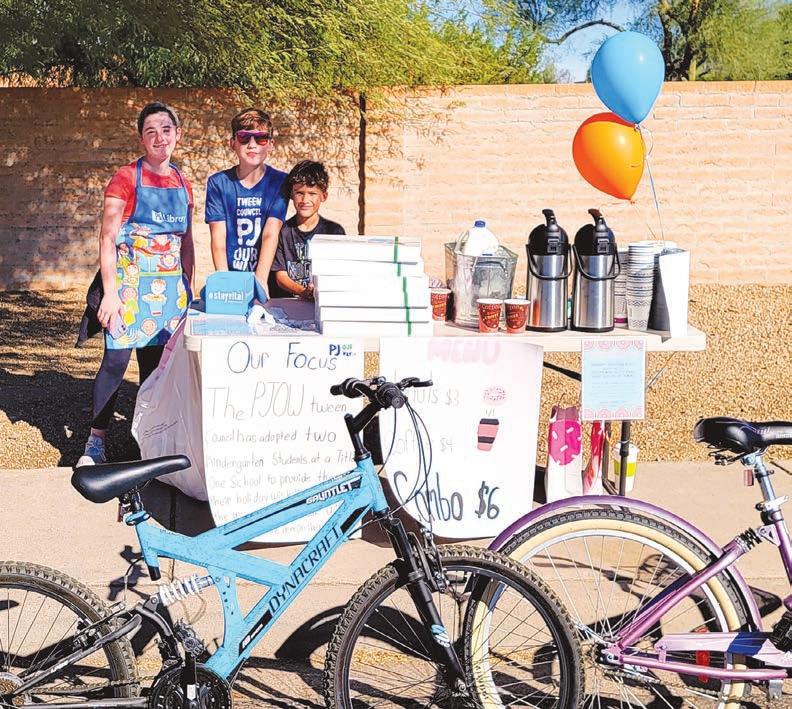
Moskowtiz joined the PJ Our Way Tween Council in the fall of 2019 because she had friends who were involved and it seemed like fun.
Being involved in the Jewish community gives her a sense of belonging, she said, and she likes to give back.
Her mom, Stacy Moskowtiz, said she is proud of all the PJ tweens for finding ways to raise money. “It’s no surprise to me that Lainey chose baking, because that’s what she loves to do,” Stacy said.
Alison Betts’ 11-year-old-son, Elliot, helped to organize a coffee cart. He hosted his first coffee cart on Sunday, Nov. 14, outside of their house, timing it with church services up the road. They raised more than $400.
“It’s given him a sense of pride that he can by himself — not through his parents, or a teacher, but himself — enhance somebody else’s life,” she said.

Alison, who is also the chair of PJ Library, said she’s not sure if Elliot and his peers are more excited about doing the fundraising or going shopping to buy the gifts, “but they are just bouncing off the walls excited about this.”
Seeing Elliot take the ownership and
pride that he has in this effort makes Alison beam.
“It feels like I’m starting habits early: that you always give back, that you always appreciate what you have and look for ways to make sure that the community is growing and thriving and benefiting from things that you can offer,” and that philanthropy is more than money. “It’s about time, and knowledge, and a sense of purpose.”
Christlyn Nurmi, a kindergarten teacher at Sequoia who also runs the adopt-a-classroom program, said that for some students the donated gifts they receive are the only ones they’ll get for Christmas.

“When they’re opening the gifts — it’s so amazing. They just light up and make squeals that you’ve never heard,” she said.
Between PJ Library, Temple Solel and the MPJCC, about 34 students will get a nice haul from Santa.
It warms Nurmi’s heart knowing that Santa came from the Jewish community, she said.


“It’s so amazing that Marcy does this,” Nurmi said. “It makes it extra special to know that she’s doing this when she celebrates Chanukah.”

Each student gives a wish list of three toys that they want. Some top picks this year were skateboards, scooters and dolls, Nurmi said. Lewis makes sure that they each get the toys, shoes, an outfit, a blanket, pajamas, underwear, socks and a book.
“It’s truly just an honor to be able to help these kids and their parents in such a huge way,” Lewis said. “Watching the kids open the gifts is unlike anything I’ve ever seen.”
Lewis will watch the kids open their presents during a classroom party on Dec. 17. She’ll take lots of photos and videos for the Tween Council.
“It’s just tears of pure joy,” she said.
20 DECEMBER 3, 2021 JEWISH NEWS JEWISHAZ.COM SPECIAL SECTION CHARITABLE GIVING Chanukah! jewishaz.com • 602-870-9470 from e
‘Doing Jewish’ at Andre House


 LAURA ZIFF
LAURA ZIFF
At Temple Kol Ami we have a decades long tradition of participating in social action activities and organizations. We see ourselves as a force for good, “doing Jewish” across Greater Phoenix with unique social programs. One of the things I love about Temple Kol Ami is that as a member, if there is something you think might interest other congregants, there is ample opportunity to bring it to the staff and give it a try.
I started volunteering at Andre House over four years ago. I wanted to find an organization that I could be passionate about, embrace and, most importantly, feel like I was making a difference. Every time I volunteer, Andre House checks all those boxes and so many more.
Andre House was started in 1984. Two Catholic priests began by serving soup near the railroad tracks in downtown Phoenix to anyone in need. The culture remains the same. Andre House considers itself a house of hospitality; all are welcome no matter their race, religion or sexual identity.
Today, Andre House serves dinner every night of the week except Friday to somewhere between 300 and 650 people, who are




experiencing some form of homelessness — people who would otherwise not have dinner. In addition, Andre House provides many resources during the day, including showers, clothing closets, telephone access, help getting through the paperwork to find housing and, many times, just someone to listen. The people Andre House serves are considered “guests.” The majority are living and sleeping on the streets in Phoenix or spending the night in a shelter if there is space available.
All are treated with respect.
Over the past three years, Temple Kol Ami has embraced Andre House through clothing and blanket drives, making hygiene kits and having its members volunteer to serve dinner on a monthly basis.
Every time that I volunteer at Andre House, I am always struck by the graciousness of those who are experiencing homelessness. During dinner, many of the guests say “Thank you;” “Bless you;” and “I appreciate you for preparing and serving the dinner.”
They are truly grateful.
When I first started volunteering at Andre House there were many options for service. I wanted to interact directly with the guests. I continue to do that on a weekly basis by working in the office that provides services to the guests.

There were two people whose stories will always be with me. The first was a 40-yearold man who had moved from Los Angeles to Phoenix to start over and make a better life for himself. He had been orphaned, not once, but twice in his lifetime. He had been in and out of jail and did not want to go back to his old “friends” in Los Angeles.

Someone promised him a job in Phoenix so he headed to Arizona. He worked as long as he could before the company went out of business. Without a cushion and with a prison record he ended up living on the streets of Phoenix and finally found Andre House to provide additional support services.
When I asked him what he wanted me to know about him, without hesitation he said, “I write poetry.” I asked when and where he started writing poetry and it was in prison. I asked if he would share his poetry, and this 40-year-old man, who had been orphaned twice, in and out of jail and was experiencing homelessness, started reciting his poetry from memory to me.
His poems were about love and how that was the only thing he wanted in life. The rest did not matter. Although I do not know the end of his story, I do know that Andre House was critical in helping him to find housing. Last we spoke he was nervous about living by himself — his current family was his street
Together, create we can WILL
family — but he was excited to move forward.
The seniors living on the street have also impacted me. A number of guests are over the age of 60 and some are over 70. I met the sweetest woman, someone who might have been someone’s grandmother. She was suffering from mental illness. Her goal was always to get back home to her family in another state. Some days she would just come into Andre House and sit. She did not want anything other than to be surrounded by people who were safe and would appreciate her. I have not seen her in months and can only hope that she was able to return home.
I love Andre House’s staff and culture. It has a very limited number of paid professionals considering the amount of services they provide, so no fancy offices, and they have their own culture of repairing the world, one person at a time.






Everyone that steps through the front doors of Andre House as a volunteer knows by the time they leave they have participated in tikkun olam and made the world a little bit better. Those who can’t volunteer in person can donate goods, make hygiene bags and donate money. JN
Laura Ziff is a member of Temple Kol Ami. For more information about Andre House, visit andrehouse.org.
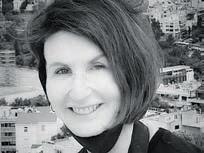



in Maricopa County.


No single organization can reach our community’s mighty goals alone. But together, we can will. When you give up to $800, you get it back dollar for dollar through the Arizona Charitable Tax Credit Program*. Last year, your donations helped over a million people receive access to emergency food, shelter, and other services. This year, they’ll help us create Mighty Change in health, housing and homelessness, education, and workforce development. Donate at vsuw.org/taxcredit

SPECIAL SECTION
CHARITABLE GIVING JEWISHAZ.COM JEWISH NEWS DECEMBER 3, 2021 21
*Arizona State tax credits are available based on your income tax filing status. Valley of the Sun United Way is not a tax advisor. As with any financial recommendation, contact a qualified tax professional for expert advice on your specific tax situation.
Happy Chanukah!
Winter clothing needed!
Temple Solel held a winter clothing drive for Afghan refugees this month, led by its religious school and in partnership with the Islamic Speakers Bureau of Arizona.

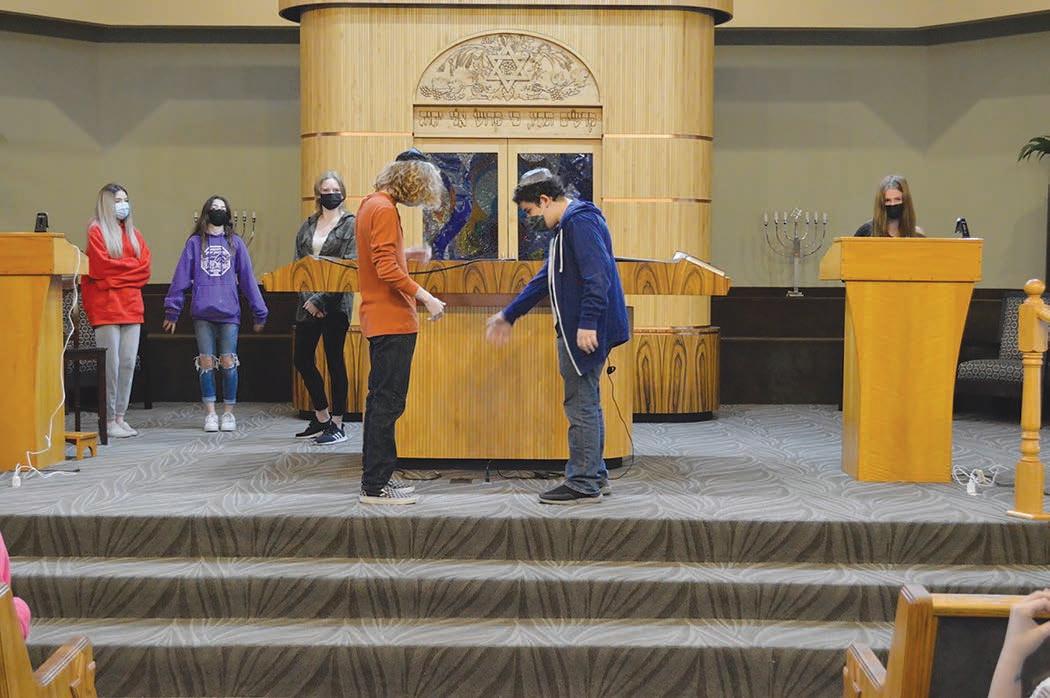

Eating and learning

On Nov. 9, the Bureau of Jewish Education of Greater Phoenix held a special Lunch and Learn with its former director, Aaron Scholar. The program was part of the Celebrate 50 with the BJE. COURTESY OF MYRA SHINDLER

Date night!
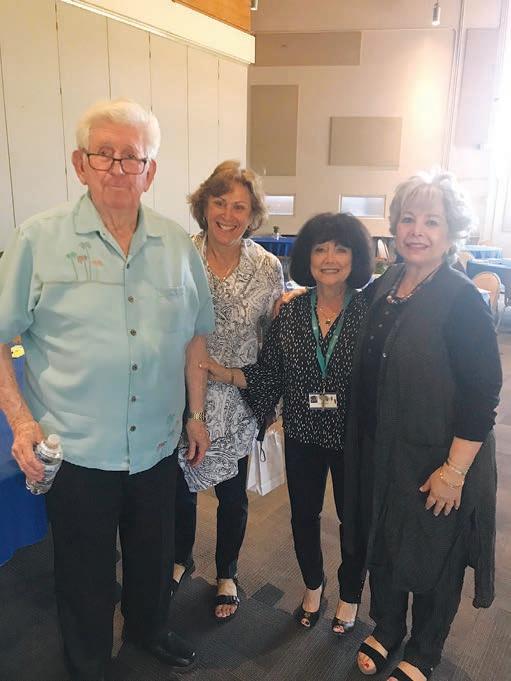
COMMUNITY
Temple Beth Sholom of the East Valley hosted a parshah play at its annual Chanukah festival.
PHOTO BY MICHELE MILLMAN
COURTESY OF RABBI JOHN LINDER
COURTESY OF POST GRAD-AZ JEWISH DATING GROUP 22 DECEMBER 3, 2021 JEWISH NEWS JEWISHAZ.COM
Several members of Post Grad-AZ Jewish Dating Group pose at a Halloween party. The group is open to Jews of all observance levels, ages 22-35
Eli and Brian Hemmert became b’nai mitzvah on Nov. 13, 2021, at Congregation Kehillah. They are the sons of Cari and Raymond Hemmert of Scottsdale.
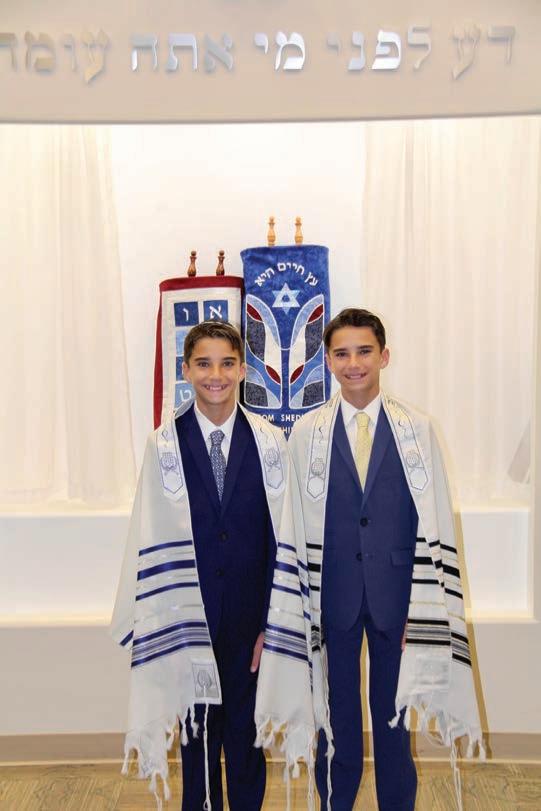
Grandparents are Marilyn and Harvey Brodsky of Manalapan, New Jersey; and Louise Hemmert of Northport, New York.
For their mitzvah projects, Eli and Brian created hygiene kits and other essentials for a resettled refugee family from Democratic Republic of Congo.
Students at Copper Ridge School, Eli and Brian enjoy playing lacrosse and relocating snakes.
J. BARRY MOFFITT
J. Barry Moffitt, 85, died Nov. 25, 2021. He was born in Los Angeles and lived in Paradise Valley.

He is survived by his wife, Arlene Graybill-Moffitt; his sons, Craig and Darrell Moffitt; his stepdaughter, Dalene Graybill-Cameron; his stepsons, David and Darren Graybill; 11 grandchildren; and one great-grandchild.
Services were held at Paradise Memorial Gardens.
Arrangements by Sinai Mortuary.
JANET ARNOLD REES
Janet Arnold Rees, 73, died Nov. 23, 2021. She was born in South Bend, Indiana and lived in Phoenix.
Jennifer L. Appelson, 45, died Nov. 9, 2021. She was born in Dover, New She is survived by her daughter, Eliana Tovah Appelson; her son, Navon Zakai Appelson; her mother, Sandra D. Snitz; and her brother, Adam Jared Siegel. Services were held at Mt. Sinai Cemetary.
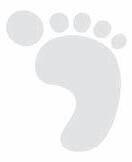

OBITUARY
HASKEL IRVIN LENTZ
Haskel Irvin Lentz, 84, died Nov. 8, 2021. He was born in Hutchinson, Kansas and lived in Phoenix.
He is survived by his husband, Greg R. Tuckman; and his brother, Owen Lentz (Kathleen).
Services were held at Mt. Sinai Cemetary.
She is survived by her husband, Tom Rees; her sons, Josh and Mason Arnold; her sister, Linda Ratcliffe; her sister-in-laws, Noreen and Bonnie Shcolnik; her ex-husband, Charles “Chick” Arnold; and two grandsons.
Services were held at Sinai Mortuary Chapel.
Arrangements by Sinai Mortuary. JN
Martin Rosenthal, 89, died Nov. 23, after surviving a stroke in June. Born in 1932 and raised in Newark, New Jersey, Martin was a graduate of Weequahic High school. He attended the University of Michigan, followed by medical school at SUNY Downstate University in Brooklyn. He was introduced to Linda Brettler in his senior year, and the two married in 1957, right after graduation. Martin’s medical training took the couple to Dallas, New York, Spokane and St. Louis. Not only did Martin gain skills and exposure to a variety of medical specialties and fine clinicians, he and Linda also became parents to David, Susan and Judith during this period. In 1965, Martin opened a solo urology practice in Maryvale with the family settling in Phoenix. Martin loved surgery, and was a caring and attentive physician to his patients. He closed his practice in 1982 at age 60.
Martin had an enviable retirement, traveling the world on foot, bicycle, car and boat. He loved opera, ballet, chamber music, art and movies. He built trails with the National Park Service, hiked mountains around the world, and swam with the dolphins in New Zealand. He made numerous trips to Italy, his favorite place to hear the opera, cycle and enjoy the food and drink.
UPCOMING SPECIAL SECTIONS
Charitable Giving

December
Arrangements by Sinai Mortuary. SHARE
Linda and Martin joined Temple Beth Israel soon after they moved to Phoenix. In his later years, Martin was a regular attendee at Temple Beth Israel’s Shabbat Torah Study, and studied for his second bar mitzvah at age 83.
Martin was an enthusiastic learner, curious about so many things, and enjoyed life on his own terms.
Martin is survived by three children, David (Lori), Susan (Chris), Judith (Stan); and seven grandchildren.
Some of dad’s favorite places to make donations include: Phoenix Chamber Music Society, Maricopa Community Colleges Foundation, Ballet Arizona and Congregation Beth Israel.

JEWISHAZ.COM JEWISH NEWS DECEMBER 3, 2021 23
OBITUARY
OBITUARY
JEWISHAZ.COM REACH HIGHLY EDUCATED, AFFLUENT READERS IN THE VALLEY Contact your sales consultant to schedule your advertising at jlipson@jewishaz.com
January 17 From home health aides to financial planners, independent living facilities to nursing homes, this is the perfect venue to showcase how your business can help older Jewish residents navigate retirement.
Senior Lifestyle
17
readers on how nonprofits make a difference in our community and reach contributors ready to make year-end giving choices. Print | Digital | Target over 42,500 Jewish readers with a mix of print and digital.
Educate
ANNOUNCEMENT
NEWS
FREE.
YOUR ENGAGEMENT, WEDDING, BIRTH, BAR/BAT-MITZVAH
AND ANY OTHER SIMCHA ON BOTH JEWISHAZ.COM AND THE WEEKLY JEWISH
... FOR
JEWISHAZ.COM

24 DECEMBER 3, 2021 JEWISH NEWS JEWISHAZ.COM












































































 RABBI MINDIE SNYDER
RABBI MINDIE SNYDER



















































 ADAM REINHERZ | CONTRIBUTING WRITER
ADAM REINHERZ | CONTRIBUTING WRITER



















































 ESTHER SPEAR
ESTHER SPEAR












 LAURA ZIFF
LAURA ZIFF


























